When is the best time to visit Brazil?

Oct 6, 2023 • 4 min read
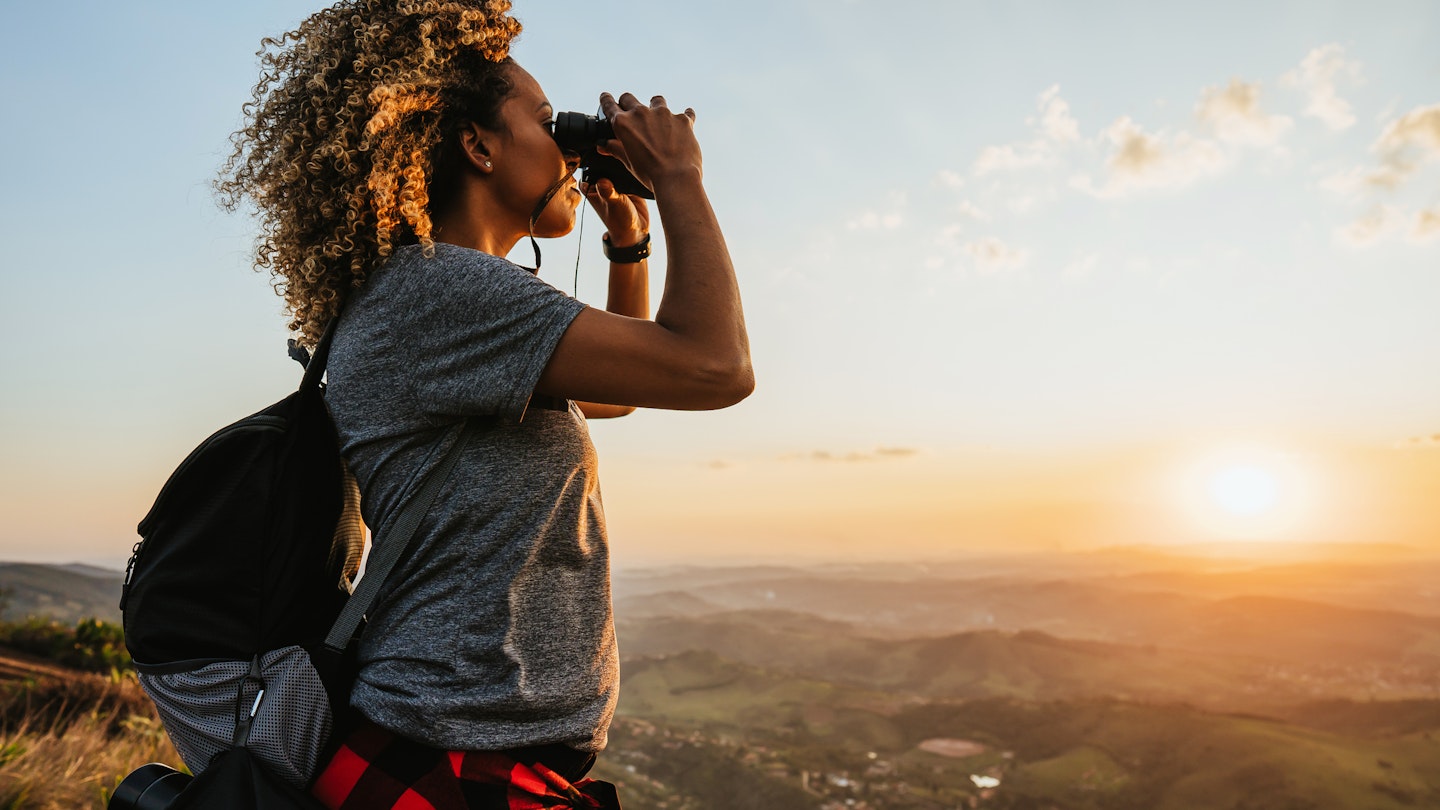
The best time to visit Brazil will depend entirely on what kinds of experiences you want to have there © andreswd / Getty Images © © andreswd / Getty Images
When it comes to the largest country in South America, choosing the best time to visit is no simple task. But before you can decide on the when, you have to think about the where.
Do you see yourself riding a cable car over the beaches of Rio de Janeiro or aboard a boat on the Amazon River? Maybe you’re taking an urban approach in the megalopolis of São Paulo , venturing into the northeast's coastal deserts, or traveling all the way to the country’s edge to gawk at the massive Iguaçu Falls , the world’s largest waterfall system on the border of Brazil and Argentina.
Home to diverse climates and seasons, you’ll need to cross-check your dream destination in Brazil with the usual weather patterns to have the best chances of sun.
However, if it's one of the country’s iconic events you hope to attend, you can trust that rain or shine, nobody parties like Brazilians. Whether you prefer to dodge the crowds by traveling in the low season or dive head-first into the exuberant frenzy of Carnaval , these are the best times to visit Brazil.
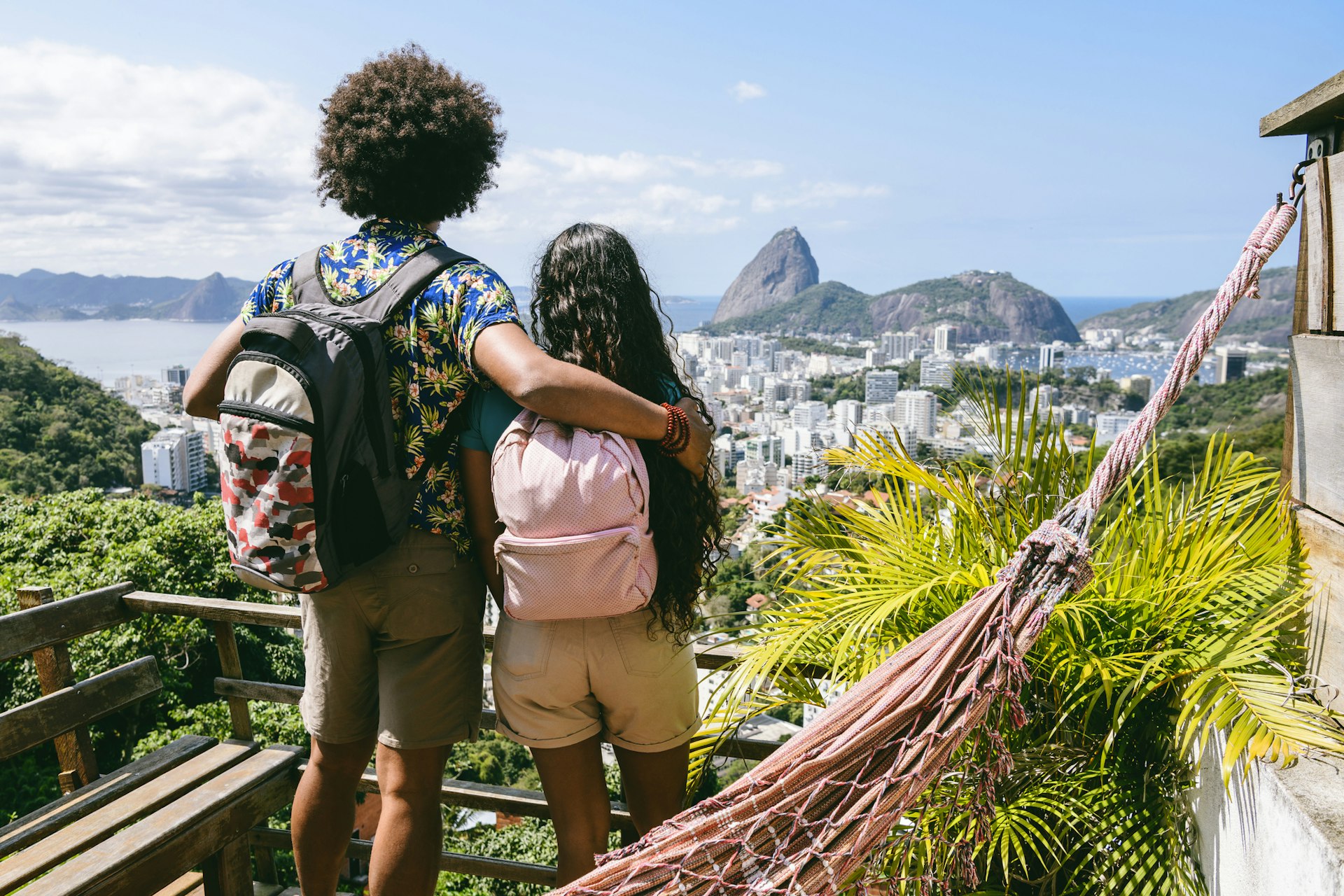

October and November are best for good weather and no crowds
You might think Brazil is always warm, but some regions can get quite wet and chilly if you go in the middle of the year.
To get the best weather – while avoiding the crowds who fill up the beaches once kids are out of school in the peak season – you should visit Brazil in either October or November.
December to March is the peak season for beach days
For travelers crossing the equator to get to Brazil, remember that the seasons in Brazil are flipped. So if you want summertime weather, you should arrive between December and March.
With over 6400km (4000 miles) of coastline, you have plenty of beaches to choose from , but those surrounding Rio de Janeiro are typically crowded with foreign tourists and Brazilian vacationers.
You could travel further north to the city of Bahia , home to a deep Afro-Brazilian history worth experiencing first-hand, or up to the northeastern state of Ceara, which shows off its own unique Nordeste culture amid a backdrop of otherworldly sand dunes. These northern regions tend to be hotter, so expect to find average high temperatures between 87°F and 90°F in the summer.
If you like the summer weather but not the extreme heat of the northern regions, you’ll find beautiful beaches down south in Florianópolis – a coastal city located on a large island. Beaches here are plentiful, long, and sandy, while summer temperatures range between 81°F and 84°F.
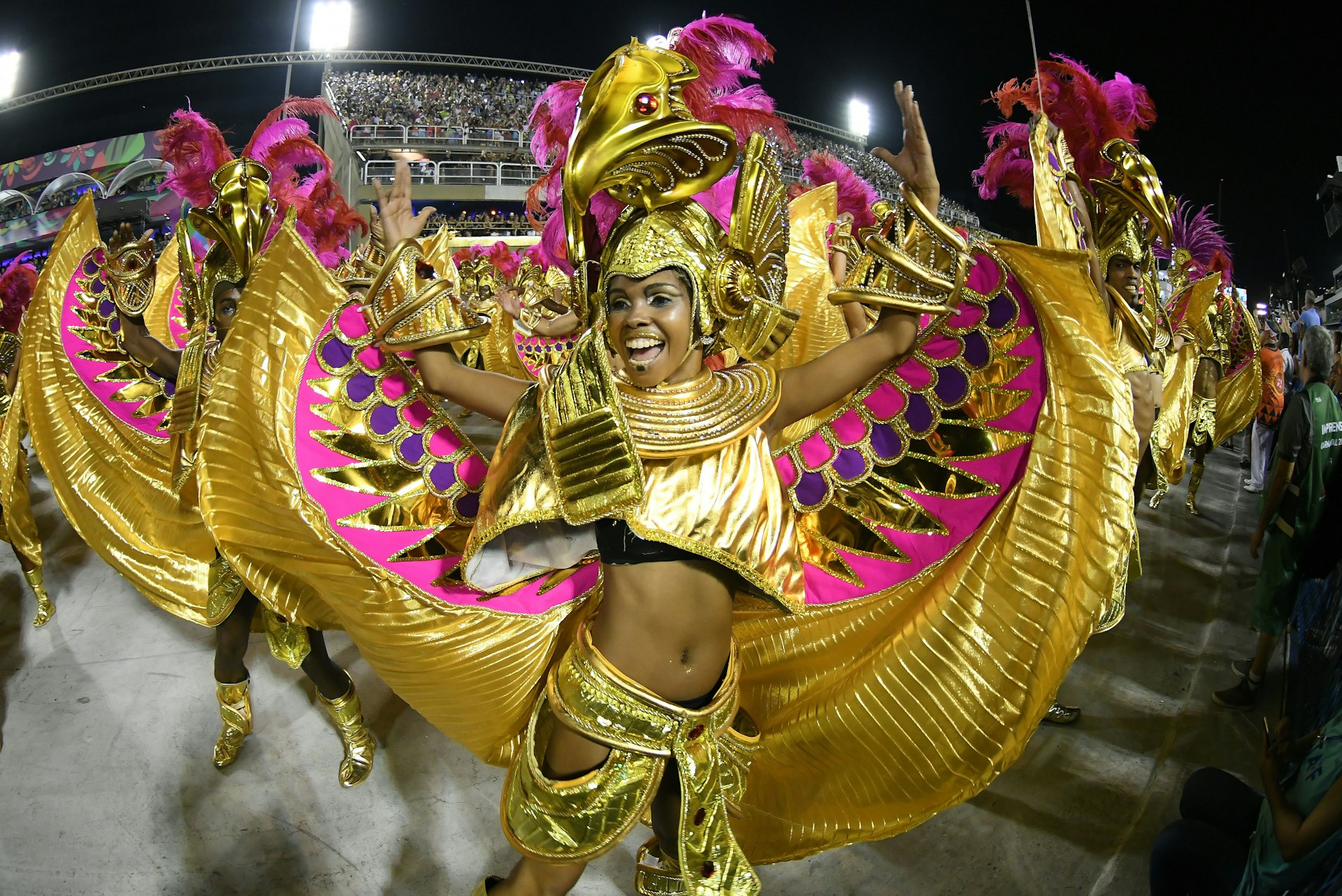
February or March is best for Carnaval fans
Brazil’s Carnaval dates depend on the religious calendar, always preceding the week before the Catholic holiday of Ash Wednesday. The week-long festivities are sometimes in February or early March.
Rio’s Carnaval is the most famous in all of Brazil, but no matter where you end up you can find local celebrations, usually with their own spin on the big festa .
There’s a lot of excitement leading up to Carnaval week, so consider an early arrival to enjoy the buzz as each city prepares to break out into song and dance while drenched in color.
Expect higher prices across the board from airline tickets to accommodations. And there will be people everywhere .
Celebrate Brazilian Christmas and New Year’s Eve between December and January
In Brazil, Santa Claus (or Papai Noel) wears Havaianas . The country’s warm weather in December means that Brazilians typically celebrate the holiday season with churrasco (grilled meat) on the beach or at least by the pool.
At this time, kids are also off school for their summer vacation so the big vacation spots tend to be more crowded.
You’ll need to get yourself to the nearest beach to celebrate Brazil’s favorite New Year’s Eve tradition. At midnight, people run into the sea to jump over seven waves, making a wish on each as fireworks illuminate the sky above.

Between July and December, visit the Amazon during its (relatively) dry season
In a place as dense and mysterious as the Amazon , you want to have the weather on your side. The best time to visit the Amazon is during the dry season between July and December, which is when hiking trails are more accessible and low water levels work in the traveler’s favor.
However, don’t be fooled by the “dry” in dry season. This is still the world’s largest rainforest and rainfall here is constant, dry season or not. Conditions at this time just happen to be preferable over the wet season, when heavier rains can pose dangerous conditions.
Between May and September, avoid the crowds during the low season
During Brazil’s winter, the beach crowds are gone but the weather tends to be a bit more damp and cloudy in the southern regions.
Except for July – when many kids have another month off from school and families take time away – you will find better rates at hotels on the beaches, but it may be too cold to enjoy a swim and sun tan.
If you do travel during the low season, consider a northern destination that’s warm all year round so you can still benefit from the low-season slowdown.
This article was first published Jul 6, 2021 and updated Oct 6, 2023.
Explore related stories

Destination Practicalities
Jun 12, 2024 • 10 min read
A multicultural, vibrant country teeming with wildlife, Guyana is off the main tourist radar. Here's all you need to know to make your visit a reality.

Jun 10, 2024 • 8 min read

Jun 5, 2024 • 5 min read

May 22, 2024 • 8 min read
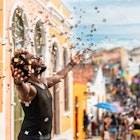
Mar 1, 2024 • 9 min read

Feb 1, 2024 • 7 min read

Dec 27, 2023 • 8 min read

Dec 27, 2023 • 4 min read

Nov 27, 2023 • 7 min read

Nov 13, 2023 • 6 min read
These Are the Best Times to Visit Brazil

Sun, sand and caipirinhas to a samba soundtrack: Fun seekers can enjoy sultry weather and tropical beaches year-round in Brazil, South America's biggest country (and the fifth-largest on Earth), depending on which area you visit. Rio de Janeiro should be on every traveler's bucket list for its distinct tropical landscape, Christ the Redeemer statue (one of the New Seven Wonders of the Modern World, no less) and its legendary Carnival, but Brazil doesn't start and end in the Cidade Maravilhosa, or Marvelous City.
Sophisticated São Paulo, for example, is a hub for culture vultures, modern architecture fans and foodies, while Foz do Iguaçu is home to the breathtaking waterfalls shared with neighboring Argentina.
Best of all, starting June 17, Brazil is officially waiving visa requirements for citizens of the US, Canada, Australia and Japan. So if Brazil is at the top of your travel to-do list, it's time to start planning a trip.
The Best Times to Visit Rio de Janeiro

It's basically summer all year long in tropical Rio, given that the average winter daytime temperature is 82 degrees Fahrenheit; visit any time to soak up Brazilian beach action (though Rio's carioca residents might find that chilly and will be wearing woolen sweaters). Party lovers should live the Carnival experience in February at least once, though New Year's Eve is equally fun-packed. For a lighter dose of blocos (street parties) and parades, soak up some pre-Carnival ambience, when the city starts cranking up the good times, but with smaller crowds.
The Best Times to Visit São Paulo

Brazil's largest urban jungle, São Paulo is more seasonal, at least in contrast with Rio de Janeiro. Known as Sampa (and also unfortunately as the Land of Drizzle), this southern hemisphere city tucked slightly inland is best enjoyed in spring and autumn, though it rains less between April and August. There's plenty to keep residents and visitors entertained year round, from 100 museums such as the Museum of Art of São Paulo (MASP) to the International Art Festival of São Paulo , São Paulo Fashion Week and a diverse food scene.
The Best Times to Visit Foz do Iguaçu

Tropical Iguaçu National Park — a UNESCO World Heritage Site — delivers varying degrees of humidity year round, with summer (December to March) packing the most intense mugginess. Summer is also rainy season, which actually has a positive spin: Water levels are higher in the park, meaning more H20 across the 275 falls, though trails will be muddier. Late March and April are a good time to visit, with fewer downpours, as are August and September.
When to Visit Brazil for Events
Rio de janeiro.
Undisputedly the world's biggest party, Carnival takes place ahead of Lent, 40 days before Easter. This is when the black, white and red sidewalks of Copacabana and other neighborhoods are packed with blocos , and revelers sporting tutus, wigs and glitter dance next to the ocean. In Rio for the New Year? Head to the beaches of Leblon, Ipanema and Copacabana with white roses as an offering to Iemenjá, a sea goddess from the Umbanda faith, on Dec. 31. The tropical city also hosts the biannual Rock in Rio concert; the Red Hot Chili Peppers, Pink, Iron Maiden and Foo Fighters will headline the 2019 edition which runs from Sept. 27 through Oct. 10.

And, while architecture might not be the first word you associate with Rio, the Marvelous City has been selected as UNESCO's first World Capital of Architecture for 2020.
This mega metropolis has 12 million Paulistas to keep entertained, so it's alive and kicking year round. Like any good Brazilian city, São Paulo hosts its own Carnival, while Pride is one of the biggest LGBT parades in the world and takes place in either May or June. (In 2019, the Pride Parade will take place on June 23.) The Museu de Arte Moderna (Modern Art Museum) hosts the world-class Art Biennial, the second-oldest after Venice; the 34th edition takes place in March 2020. The city also hosts Brazil's F1 Grand Prix, this year between Nov. 15 and 17.

Foz do Iguaçu
Given that the falls are the greatest attraction in Iguaçu, the city isn't exactly swarming with events. Do, however, visit the Argentine side of the falls for a different panorama (while racking up another visa stamp). Puerto Iguazú over in Argentina notches up the 10th edition of Iguazú en Concierto, a series of live music concerts, this June.

Other Events in Brazil
Brazil has particularly strong German roots, especially in the south of the country. Oktoberfest is the perfect fit for fun-loving Brazilians keen to dress up in lederhosen and knock back cerveja (beers); the city of Blumenau hosts the biggest such gathering.
The Best Times to See Wildlife in Brazil
Brazil is one of the world's most biodiverse countries, and Iguaçu National Park holds up its end of the deal: It's home to 2,000 avian, fauna and flora species. Look out year-round for capybara, the world's largest (and sweetest-looking) rodent; toucans; spectacled caiman; vibrant butterflies; and coati. The latter are friendliest with humans, as they're always keen for a snack.
While a pandemonium of scarlet macaws taking to Rio's skyline is the norm, reforested rainforest Tijuca National Park , just south of the city, is home to 62 mammal species including squirrel monkeys, crab-eating fox and coati that can be spotted year-round. Also check out avian wildlife in the Jardim Botânico (botanical garden).

Travelers can also see jaguars in the Pantanal tropical wetlands in September and October; humpback whales in Abrolhos Marine National Park July through December; while in the Amazon rainforest you can spot sloth and giant river otters for most of the year.
The Cheapest Times to Visit Brazil
High season in Brazil is considered June through August, when North Americans and Europeans take summer vacation; March is the cheapest month to fly, according to Kayak . LATAM, American and Azul have the most flights from the US to Brazil, and though Kayak considers São Paulo its most popular destination, Rio has its own high season thanks to Carnival (which depends on Easter's date) so book rooms and flights well ahead for the best prices.
In Foz do Iguaçu, avoid January and February, when Brazilians and Argentinians take summer vacations, packing out hotels and restaurants; also avoid national holidays such as Easter and the second fortnight in July (school winter vacation) for the same reason.
In Rio de Janeiro, prices skyrocket in both pre- and Carnival season, especially in prime beachside neighborhoods like Copacabana, Ipanema, and Leblon. You'll find affordable hotels in Santa Teresa and Botafogo.
As for São Paulo, check out the Vila Madalena neighborhood, home to street-art filled Beco do Batman alley and the Japanese neighborhood of Liberdade for affordable accommodation.
Change location
- UK / International
- Call toll-free from 9am EDT
- 617-223-4521 617-223-4910 or
- REQUEST A QUOTE
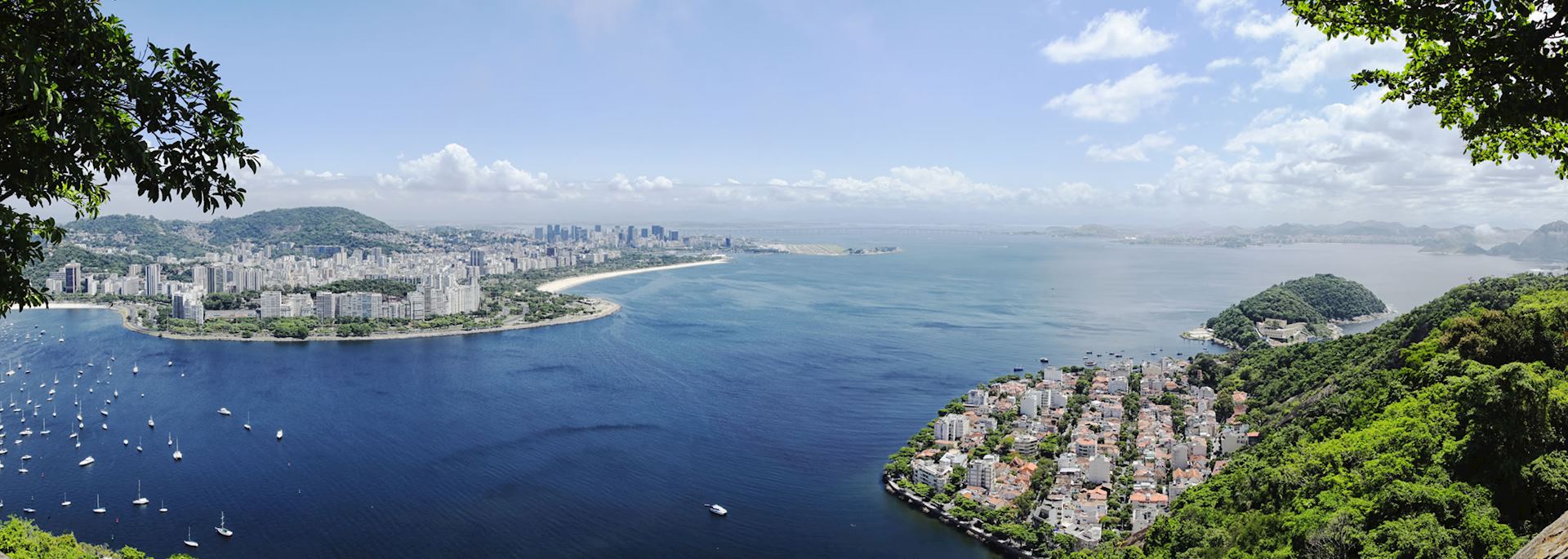
When is the best time to visit Brazil?
- Rio de Janeiro
- Month-by-month
There isn’t a best time to visit Brazil — it’s a warm, year-round destination, with most of the country located in the tropics. It’s made up of several climatic extremes, none of which are severe enough to deter travel to an area at any given time.
Across the country, the warmest months are November to March — perfect for enjoying New Year and Carnival celebrations. The northeastern coast experiences some rain in June and July, but usually only in the form of afternoon showers.
The driest months in the Pantanal are between April and October, but like in the Amazon, its wetter months offer distinct wildlife spotting opportunities and experiences. Both rainforests are humid, with temperatures rarely dropping below 68°F.
- Make an inquiry
- Request a brochure
Month-by-month guide for traveling in Brazil
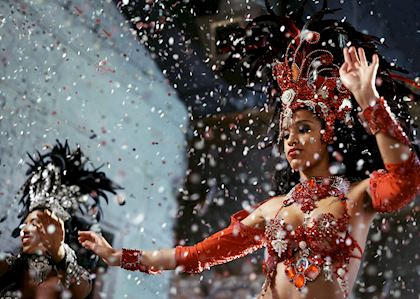
Visiting Brazil in January - March
Between January and March is mid-summer across Brazil, although the warmer days are accompanied by the start of the rains in the Amazon and the Pantanal . February in particular is a popular time for Brazilians to travel, with Carnival often falling in this month.
Events & Festivals
- Carnival (February or March, depending on when it's the beginning of Lent): The most famous celebrations take place in Rio, where visitors crowd to see the colorful samba parades and join the lively street parties. carnival celebrations.
- Semana Santa (Easter): During Semana Santa, the cobbled streets of Ouro Preto in Minas Gerais are covered in carpets of intricate patterns of flowers and other natural materials.

Visiting Brazil in April - May
A pleasant time to travel as the high temperatures of the last few months decline. The Pantanal enters its dry season toward the end of April.

Visiting Brazil in June - July
June and July are lovely times to visit the Green Coast between Rio and São Paulo; evenings are cooler, but the air is fresh and the sea still warm. Bahia's rainy season tends to begin in June, but it is usually easy to plan your day around the one or two showers that arrive in the afternoon.
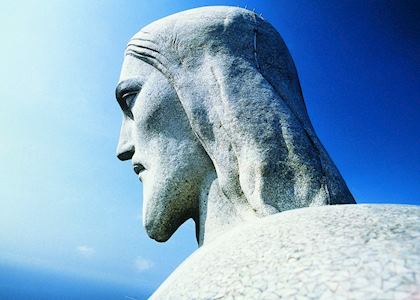
Visiting Brazil in August - October
Perhaps the best time to visit the Pantanal , August, September and October are also great for spending time in Rio , where spring is arriving, there are few clouds in the sky and the temperatures are on the rise.
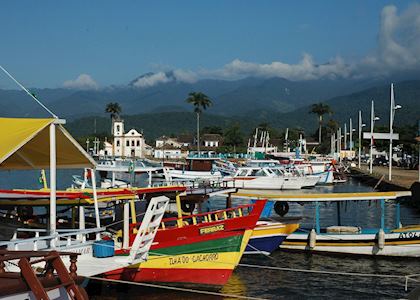
Visiting Brazil in November
Summer arrives in November, and you can expect high temperatures across the country.
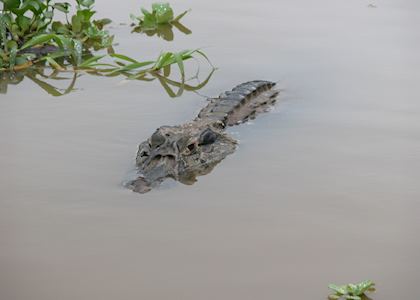
Visiting Brazil in December
Rio de Janeiro tends to be hot and dry in December, but it can be particularly busy as visitors flock to the city to celebrate Christmas and New Year. Most of the northeast tends to experience similar hot and dry weather. Water levels in the Amazon are low in December.
- New Year's Eve (December 31): New Year's Eve is a sight to be seen in Rio, where much of the city dresses in white and gathers on the Copacabana Beach to watch a huge fireworks show over the sea.
Brazil Climate Guide
Why travel with audley.
- 100% tailor-made tours
- Fully protected travel
- Established for over 25 years
- 98% of our clients would recommend us

Travel advice
Practical tips for traveling to Brazil, from social protocols to guidance on money matters, with a link to the latest US State Department travel advice.

Request our brochure
Covering all seven continents, The World Your Way shows you how you can see the world with us. It features trip ideas from our specialists alongside hand-picked stays and experiences, and introduces our approach to creating meaningful travel experiences.
Trip ideas and travel guides for exploring Brazil

Argentina & Brazil: cities & waterfalls
9 days from $4,840pp
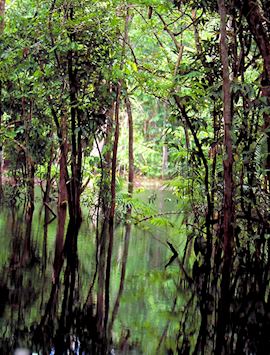
Brazil in a nutshell: Iguaçu Falls, Amazon & Rio
10 days from $9,660pp

What to do in Brazil: our highlights guide
10 min read

Family vacations in Brazil
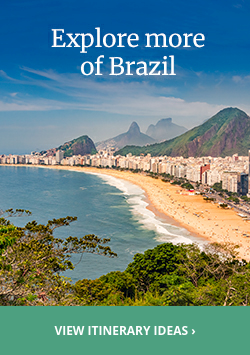
Best Time To Visit Brazil
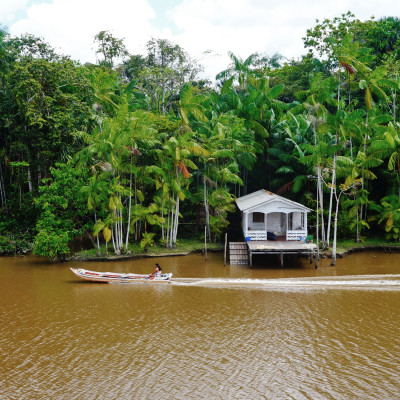
Experience tropical bliss in Brazil
As large parts of the vast landscape lie in the tropics, the climate is uniformly tropical or subtropical, so you can travel to Brazil at any time of the year. The seasons in the southern hemisphere are exactly opposite to ours, so when it is summer for us it will be winter in Brazil.
Best Time To Visit
We recommend.
- Visit Sao Paolo for its modern architecture, the unusually picturesque Parque do Ibirapuera and countless art museums
- Enjoy the lush scenery at the Jardim Botanico in Rio, a huge botanical garden, which has over 8,000 different species of plants
- What would Brazil be without the Carnival of Rio de Janeiro? Whether in the famed Sambadrome or out on the streets across the city, the Carnival is an experience you must enjoy at least once in your life!
- Spend time on arguably one of the world’s most famous beaches and Rio’s iconic attraction – Copacabana
- The higher volume of water at this time makes a visit to the Brazilian side of the Iguazu Falls a memorable experience!
- Travel on the Sugarloaf Cable Car and take in stunning views of the natural landscape in Rio
- With the south becoming harder to visit in winter, head to Minas Gerais, in southeastern Brazil, known for colonial-era towns dating back to the country’s 18th-century gold rush
- The start of the dry season makes a good time to explore the largest marshland in the world, Pantanal
- Take a tour of the desert landscape of the Lençóis Maranhenses National Park, a protected area on Brazil’s North Atlantic coast, and enjoy its lagoons filled with water at this time
- Visit the city of Manaus, a gateway to the lush green Amazon forest
- Hike through the Amazon Archipelago’s dry forests
- Spend a day with the renowned Boto(Pink Dolphins)
- Experience the traditional way to enjoy the Amazon: sail to the Rio Negro
- Take a tour of Salvador da Bahia and soak in this beautiful city’s living, breathing Afro-Brazilian culture
- At the Amazon, interact with the friendly and warm Caboclos indigenous people who live in stilt houses by the river
- Go off the beaten track with a visit to idyllic Picinguaba and soak up the sun on the unspoiled beaches
- Visit the beautifully preserved, charming old town of Paraty, which will take history buffs and culture travelers back in time
- Spend time savoring the taste of Rio – from its fantastic fruits to pastries and savory treats from the street food vendors
- Visit the glamorous Brazilian coastal city of Recife
- Head to untouched beaches of Picinguaba in the Atlantic’s bay for a leisurely stroll and a refreshing bath
- Visit Rio de Janeiro’s biggest tourist attraction – Corcovado, home to the towering Christ the Redeemer statue – one of the Seven Wonders of the World
Climate in Brazil
Climate in northern brazil.
Brazil has a warm, tropical climate with hardly any difference in temperatures throughout the year so you can visit Brazil at any time of the year.
Climate in Southern Brazil
The climate here ranges from subtropical to temperate. As you travel southwards during your Brazil trip, the difference between seasons becomes more pronounced. Brazil experiences winter between May and September with temperatures of around 20°C during the daytime. In the summer months between November and March, the temperature rises above 30. The southern coast of Brazil boasts the most beautiful beaches and wonderfully warm water throughout the year. The water at the southernmost tip of Brazil is too cold for swimming between the months of June to September.
Climate in the Amazon Basin of Brazil
Although it rains throughout the year in the Amazon Basin, the dry months of April to September are the best time to visit Brazil’s rainforest, with only short bursts of rainfall at a time.
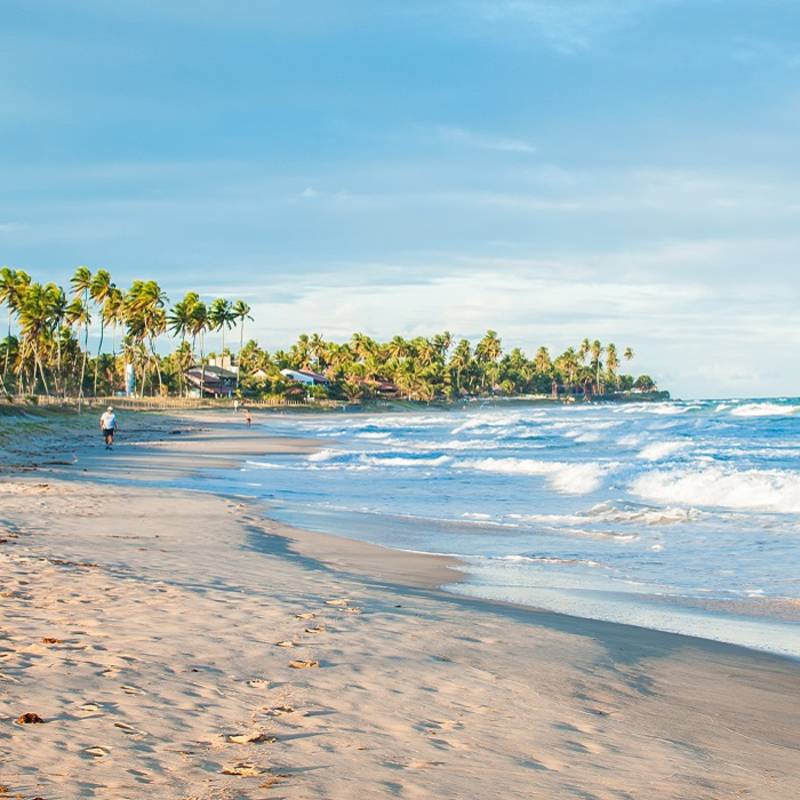
What to Pack
South America is an enormous continent and there are several different types of landscapes, and the climatic zones will vary greatly on your trip. The weather varies by country, region and season. When traveling to Brazil, here are a few items you must carry: Lightweight rain and wind jacket (especially from Dec to Mar), comfortable shoes, swimsuit, sandals, beachwear, sunglasses, hat and sunscreen and mosquito repellent. But largely, don’t worry about a dress code! South America is generally very relaxed; you might want to pack something fancier for a night out but only five-star hotels and a few restaurants actually expect some sort of etiquette in the evening.

From the Blog
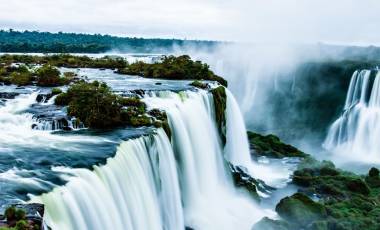
Iguazú Falls – The World’s Largest Waterfalls
It is often said that Argentina provides the show and Brazil enjoys the view of the Iguazú Falls, with Brazil dominating the panoramic side having several viewing walkways! So, which is the best side?
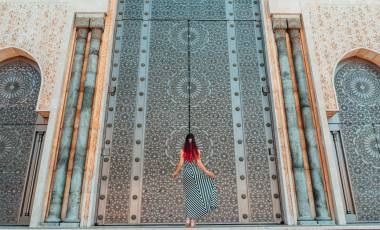
Six Destinations We Can't Wait To Visit Again
From vibrant souks and medinas bursting with energy to volcanic islands in the Indian Ocean and sky-high sand dunes in ancient deserts, these six destinations fire our wanderlust time and again. That’s why we can’t wait to go back!
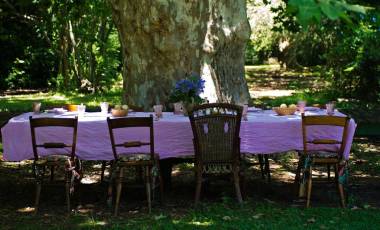
Top Tips for Tipping in South America
There are many cultural norms when you travel in South America. How you tip is just one of them. Whether you wish to tip at a restaurant, cafe, in a hotel or your driver, check out our top tips for tipping before you embark on customized South America tours.
Popular Trips to Brazil
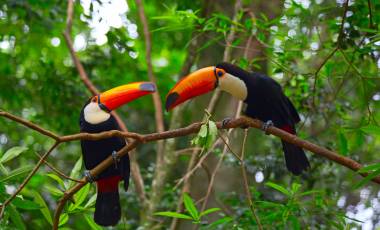
Brazil: Treasures of the Amazon
If you want to truly experience the best of what the fabulous Amazon region has to offer, this is the tour for you. Enjoy canoe rides and guided hikes around the Mamiraua Reserve to spot wildlife such as howler monkeys and uakaris. Go on an excursion to look for river dolphins and caimans at Mamiraua…

Brazil: Pantanal & Amazon
This is the perfect tour for nature and wildlife enthusiasts who want to experience the rich biodiversity of the world’s largest rainforest and the world’s largest wetland. Explore the assorted charms of Rio de Janeiro before heading into the Pantanal region. Enjoy guided hikes, and horseback and canoe rides around the wetlands to learn about…
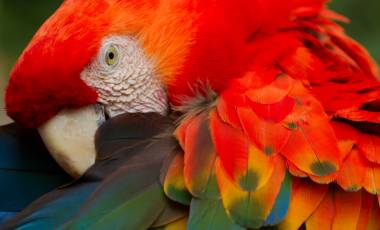
Brazil: Amazonas, Iguazu and Bahia
Discover untamed nature, wildlife and authentic local culture on this 15-day luxury Brazil vacation. Travel straight from one stunning highlight to another – from the buzzing beaches of Rio to the thundering Iguazu Falls, and the Amazon rainforest. Afterward, spend days exploring the vibrant Bahia region with its rich culture, colonial heritage and delicious Afro-Brazilian…
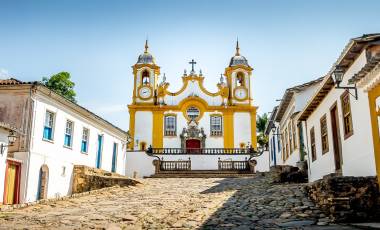
Colonial Brazil and Fernando de Noronha
From a rich contemporary art and culture scene to colonial towns and the Gold rush, vibrant markets, museums and Portuguese and Dutch history, discover the heritage of Brazil on this tour. End your vacation on the sunny beaches and pristine islands of Fernando de Noronha, one of the most important ecological sanctuaries in the world!
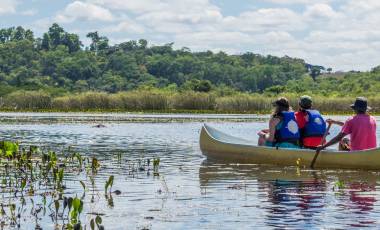
Brazil's Big Cities, Nature and Beach
From the cosmopolitan centers of Rio and Sao Paolo, this Brazil vacation takes you into the heart of the country’s incredible natural wonders – the roaring Iguazu Falls and the bio-diverse Pantanal. End your strip sunbathing on pristine beaches at Bahia’s beautiful Discovery Coast.
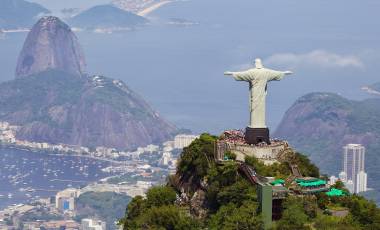
Iguazu, Gold Rush and Beaches
This tour of Brazil offers not just a gander at the country’s most impressive and popular sights, such as vibrant Rio de Janeiro and the Iguazu Falls but also downtime at picturesque towns and stunning beaches. Delve deep into Brazilian art and culture, discover colonial architecture and heritage, and experience the slow pace of life…
Best Places To Visit
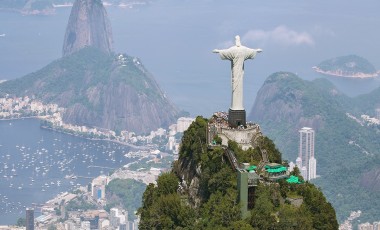
Rio de Janiero’s famous icons include Copacabana, Sugar Loaf, Samba, Ipanema, Caipirinha cocktails, beach culture and of course the magnificent subtropical rainforests.
Rio de Janeiro
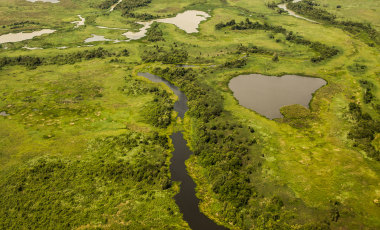
Pantanal North is a stunning tropical wetland with an amazing variety of animals. This remote region is truly a paradise for nature lovers and adventurers.
Pantanal North
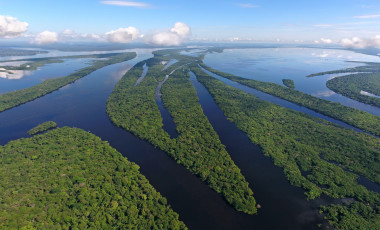
Amazonas is the heart of the Amazon rainforest with unparalleled biodiversity. Discover one of the world’s largest rainforests finding unmatched natural beauty.
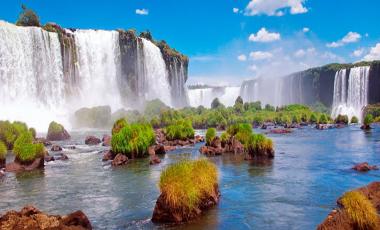
Foz do Iguaçu on the Brazilian side and Puerto Iguazú on the Argentinean side are not just the gateways to the breathtakingly beautiful and awe inspiring waterfalls, but are also the nearest cities to the intersection of the borders of three countries that include Argentina, Paraguay and Brazil.
Foz do Iguacu
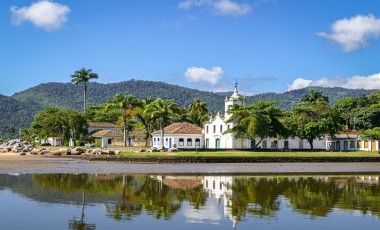
The well preserved colonial town of Paraty will surely enchant you! Its colorful houses lining the cobblestone streets, the deep blue waters of the bay and the encompassing secretive flair combine to make Paraty a truly unique destination in Brazil.
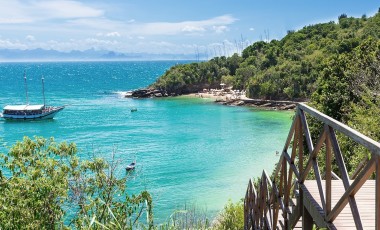
Búzios lies on a jutting peninsula scalloped by more than 2 small beaches.
Things To Do
Beaches, waterfalls, rainforest and samba – Brazil is brimming with treasures big and small! Our destination experts shed some light on the best loved highlights, attractions and activities to plan for Brazil holidays.
Travel Guide
From football fervor to festival fever, visas, vaccinations and language and everyday experiences, discover the top Brazil travel tips from our destination experts in our travel guide.
The food of Brazil includes many delicious dishes imbued with tropical flavors and inspired by bounteous nature and the colorful culture of Brazil. From Brazilian coffee to fresh juices and smoothies, eat your way through the country!
The Enchanting Difference
Authentic & unique.
Our award-winning, licensed local guides provide incredible insights and exclusive experiences for you.
Personalized & Private
Our experts completely customize your private tour to match your interests and preferences.
High-Quality Experiences
All our accommodations and services are personally tested by our team.
Fully Supported Travel
You’ll have a personal and dedicated trip coordinator, backed by 24/7 support in case of emergencies while you’re traveling.
Financial Protection & Flexibility
Your booking is flexible and completely secure with us.
Safe & Secure
Your safety and well-being are our top priorities.
Do you have a vacation in mind? Personalize your itinerary with our Trip Builder.
The Best Time to Visit Brazil for Weather, Safety, & Tourism
The best times to visit Brazil for ideal weather are
May 7th to August 26th
based on average temperature and humidity from NOAA (the National Oceanic and Atmospheric Administration). Read below for more weather and travel details.
Brazil Travel Guide
Temperature.
- Perceived Temperature
- Rain and snow
- Humidity and wind
- The busiest and least popular months
- Overall travel experience by time of year
Other Brazil Travel Info
Weather in brazil.
Average temperatures in Brazil vary very little. Considering humidity, temperatures feel hot for about half of the year and otherwise nice with a very low chance of rain throughout the year. The area is somewhat temperate — in the 51st percentile for pleasant weather — compared to tourist destinations worldwide. Weeks with ideal weather are listed above . If you’re looking for the very warmest time to visit Brazil, the hottest months are February, December, and then January. See average monthly temperatures below. The warmest time of year is generally early February where highs are regularly around 87.5°F (30.8°C) with temperatures rarely dropping below 72.4°F (22.4°C) at night.
Brazil Temperatures (Fahrenheit)
Brazil temperatures (celsius), “feels-like” temperatures.
The way we experience weather isn’t all about temperature. Higher temperatures affect us much more at higher humidity, and colder temperatures feel piercing with high winds. Our perceived temperatures factor in humidity and wind chill to better represent how hot or cold the day feels to a person.
Brazil Perceived Temperature (F)
Brazil perceived temperature (c), average brazil temperatures by month.
Daily highs (averaged for the month) usually give the best indication of the weather. A significantly lower mean and low generally just means it gets colder at night.
Show Fahrenheit
Show celsius, precipitation (rain or snow).
If dry weather is what you’re after, the months with the lowest chance of significant precipitation in Brazil are August, September, and then October. Note that we define “significant precipitation” as .1 inches or more in this section. The lowest chance of rain or snow occurs around early August. For example, on the week of July 30th there are no days of precipitation on average. By contrast, it’s most likely to rain or snow in early to mid February with an average of 1 days of significant precipitation the week of February 12th.
Chance of Precipitation
The graph below shows the % chance of rainy and snowy days in Brazil.
Snow on the Ground
The graph below shows the average snow on the ground in Brazil (in).
Average Rain and Snow by Month
Show inches, show centimeters, humidity and wind.
Brazil has some very humid months, with other comfortably humid months. The least humid month is August (57.4% relative humidity), and the most humid month is March (71.3%).
Wind in Brazil is usually calm . The windiest month is September, followed by October and November. September’s average wind speed of around 6.8 knots (7.8 MPH or 12.6 KPH) is considered “a light breeze.” Maximum sustained winds (the highest speed for the day lasting more than a few moments) are at their highest in early to mid October where average top sustained speeds reach 12.1 knots, which is considered a moderate breeze.
Relative Humidity (%)
The graph below shows the average % humidity by month in Brazil.
The graph below shows wind speed (max and average) in knots.
Average Wind Speeds
Show wind speeds.
All wind speeds are in knots. 1 knot = 1.15 MPH or 1.85 KPH.
Show Relative Humidity by Month
Is it safe to travel to brazil.
Our best data indicates this area is somewhat safe. As of Dec 04, 2023 there are travel warnings for Brazil; exercise a high degree of caution. Check this page for any recent changes or regions to avoid: Travel Advice and Advisories . This advisory was last updated on Nov 24, 2023.
The Busiest and Least Crowded Months
The busiest month for tourism in Brazil is January, followed by June and February. Prices for hotels and flights will be most expensive during these months, though you can save if you purchase well in advance. Tourists are unlikely to visit Brazil in December. Those willing to visit at these times will likely find it the least expensive month.
Estimated Tourism by Month
Most popular months to visit, overall brazil travel experience by season, fall (march through may).
Humidity and temperatures combine to make this season feel warm. Highs range from 86.3°F (30.2°C) and 79.7°F (26.5°C) with colder temperatures in the later months. Rain is rare with 2 to 3 days of significant precipitation per month. Fall is the second busiest for tourism, which makes it a good time for those looking for things to do.
Winter (June through August)
The middle-year months have very comfortable weather with high temperatures that are comfortable. These months see moderate precipitation with 1 to 2 days of precipitation per month. June – August is fairly slow season for tourism in Brazil, so lodging and other accommodations may cost slightly less.
Spring (September through November)
Spring daily highs range from 86.6°F (30.3°C) and 84.3°F (29.1°C), which will feel very nice given the humidity and wind. It rains or snows a normal amount: 1 to 2 days per month. Tourism is the slowest during these months due to the weather, so hotels may be affordably priced.
Summer (December through February)
Weather is perfect this time of year in Brazil to be enjoyable for warm weather travelers. The average high during this season is between 87.5°F (30.8°C) and 85.6°F (29.8°C). On average, it rains or snows a smalll amount: 2 to 3 times per month. These times of year are the busiest with tourists.
Best Times to Travel › Brazil
Similar Destinations
- Sete Lagoas, Brazil
- Esmeraldas, Brazil
- Confins, Brazil
- Santana do Riacho, Brazil
- Ribeirão das Neves, Brazil
- Lagoa Santa, Brazil
- Vespasiano, Brazil
- Betim, Brazil
- Divinopolis, Brazil
- Contagem, Brazil
Popular Destinations
- San Antonio, TX, US
- New Delhi, India
- Colombo, Sri Lanka

Best Time To Visit Brazil: Experience the Vibrant Beauty
Are you thinking of Brazil as your next bucket list destination but don’t know when you should go? Let this article help you plan your trip on the best time to visit Brazil.
While this South American country can be visited all year round, some months are better than others. This fact is especially true when it comes to weather, which varies significantly depending on where and when you are traveling.
We spent an entire month in Brazil in December. We came from Montevideo, Uruguay, and traveled by bus to Porto Alegre. We worked our way north to Rio de Janeiro, which was very hot and humid. When we return to Brazil, I am researching all the different months that would make the best time to visit.
Since it’s such a large country with many things to consider, including your travel goals, interests, and preferences, here is a quick guide showcasing the best months and seasons to travel to Brazil.
Table of Contents
Climate in Brazil
Because of its vast area, Brazil is known to have different climates depending on the place you’re visiting. But one thing is sure: 90% of the country lies in the tropics, so you can expect it to be warm most of the time.
From October to April, temperatures in the southern part of the country can get cool but not cold. In contrast, the northern coast and the Amazon are where you’ll mostly experience sunny skies and year-round warm temperatures—perfect for your dream beach summer vacation.
Summer months in Brazil are very hot, but the average temperature remains below 90°F (32°C). Its warm climate, vibrant Amazon rainforest, and pristine beaches make Brazil loved by many tourists and locals.
Visiting Brazil in Winter
You might think of snow and freezing temperatures when talking about winter. However, the winter season in Brazil is still considerably warmer than in other countries.
With temperatures rising above 68°F (20°C), the skies will remain blue, the country will stay humid and dry, and you can still enjoy many outdoor activities. In Brazil, snow only occurs at high elevations, such as in the southern mountains, and is extremely rare in the lower plains.
The coolest months in Brazil are from June to August. The winter season is when tourists visit natural landscapes and are mesmerized by nature’s display of wildlife. Since winter typically sees a decrease in rain and humidity in Brazil, a trip to one of its famous destinations— Rio de Janeiro , particularly the Christ the Redeemer statue—is loved by many foreigners.

It’s unnecessary to wear thick clothing during the winter season in Brazil, but wear jeans or light sweaters if you’re in the cool breeze.
Visiting Brazil in the Spring
If you want to visit Brazil in spring, consider a trip from September to November because the country slowly transitions out of the winter and into the summer.
During the day, the temperature can be up to 80°F (27°C). You can still visit all the famous locations and immerse in the sunny weather without enduring the sun’s scorching heat as much as you would in the summer.
To make the most of the shoulder season in spring, you can engage in various outdoor activities on land, such as hiking, trekking, sightseeing, swimming, or snorkeling. If you want to take your adventure to the next level, consider a trip to Iguazu Falls , Sugarloaf Mountain , and Florianopolis , where you can magnify the beauty of wildlife.

At night, the temperature can drop up to 70°F (21°C), making it enjoyable to stroll around breathtaking places while feeling the cool breeze.
During the spring season, you want to wear loose, light-colored clothing with fabrics made of cotton. In warmer weather, these kinds of clothes are better than other fabrics. It’s suggested to wear tank tops, summer dresses, and light, loose shirts and shorts.
Visiting Brazil in Summer
Brazil is located near the equator, meaning summer is the hottest. The summer is from December to March, when temperatures can be as high as 87°F (31°C).
If you don’t like sweating, visiting the country in these months may not be the best option. However, if you want to achieve that sunkissed glow, a trip to the luscious Copacabana Beach may be the best activity to do during the summer.
If you’re looking forward to the famous Brazilian Carnival celebrated every February, consider visiting Brazil in the summer. You can join in the fun of festivals, dancing to samba music and witnessing grand parades where the locals showcase vibrant, colorful costumes and floats.
Because of the hot weather, you want to wear loose, comfortable clothing. Sunglasses, hats, or caps add style to your outfit and contribute to the overall comfort and protection of exposure in the summer heat.
Visiting Brazil in the Fall
The fall season in Brazil, from March to May, marks the end of summertime. The temperature drops to 80°F (27°C), making a trip to its famous landmarks easier as the weather becomes less scorching.
Although it’s still humid and warm in the fall, it is less intense than during the summer. You can enjoy many land and water-based activities as the country transitions to its dry season. These include mountain hiking, immersing in beaches across the country, and exploring the cultural scene in São Paulo .

That is when tourists are fewer, costs are cheaper, and accommodations are widely available. If that sounds good, a trip to Brazil during the fall may be a viable option.
Best Time to Travel to Brazil
For the festivals.
Brazil is known for its Rio de Janeiro Carnival festival, which marks the beginning of the Lent season in this predominantly Catholic country. The exact dates vary depending on the Catholic Church calendar. The festivities begin on a Friday evening, last five days, and end on Shrove Tuesday, the day before Ash Wednesday.
The Brazilian Carnival is one of the most famous festivities in the world, where lavish costumes, extravagant floats, and non-stop samba parties are showcased in the streets of Rio de Janeiro. If you want to participate in this celebration, you’d want to visit the country in February.
For the Lowest Accommodation Prices
Peak season in the country starts from December to February, from Christmas until the Rio Carnival. Although these might be the most fun times to travel to the country, it’s also the peak season, so they won’t be the cheapest.
July may also be a busy month because universities and schools have their winter break. Prices will also increase since many locals and tourists flock during these times.
Hence, if you plan to go when accommodations are cheap and widely available, the time of the year to visit Brazil is when there are fewer crowds, from September to October and March to May.
For accommodation options, you may click on the map.
The Best Season To Visit Brazil
If you want to enjoy as many outdoor activities and events as possible in Brazilian cities and beaches, the perfect time to visit the country is during the high season, from December to March, when summer starts.
The warm temperature, lush greenery, and sunny skies are best for all activities. It’s recommended to be near the coast during summer to enjoy the pristine beaches, sea breeze, and sunsets.
Best Season To Go to Rio de Janeiro
You can visit Rio de Janeiro during peak travel times, from December to March. Not only is it the best weather for enjoying many outdoor activities, but it’s also during this season when the world-renowned Carnival Festival is held in Rio de Janeiro.
However, if you want to avoid the crowds, a visit during the spring season—from September to November—may be a favorable option.
Best Season To Go to the Amazon and the Pantanal
The Amazon and Pantanal are best visited during the spring season, from September to November, because there will be less rainfall during these months. Since these destinations are rainforests and wetland areas, you’d want to go on sunny days.
Best Season To Go to Salvador de Bahia

Visiting Salvador de Bahia at any time of the year is possible due to its tropical climate and pleasant water temperatures. However, you’d want to avoid visiting between April and June because these are high-humidity seasons and are considered the rainiest months.
Best Season To Go to São Paulo
The best seasons to go to São Paulo are fall and spring, from March to May and September to November. These are considered shoulder seasons, where temperatures are warm but not hot, and less rainfall will occur.
Useful Tips To Stay Safe During Your Brazil Trip
- Pack your things depending on the season. Since Brazil has a tropical climate, it’s recommended to lightweight and loose clothing unless you’re visiting during winter months. Also, bring sunscreen , sunglasses , and mosquito repellent .
- Don’t explore the Amazon and Pantanal alone. Make sure to have a knowledgeable travel guide accompany you, as these places can be dangerous.
- The language spoken in Brazil is Portuguese. Not many locals can speak English, so download Google Translate or learn some basic Portuguese before you go.
- In Brazilian culture, kissing on both cheeks is common during introductions. Placing a hand over the shoulder and giving hugs even to strangers is considered normal.
- Consider protecting yourself with travel insurance such as SafetyWing , which can cover medical emergencies, trip cancellations, and other unforeseen incidents during your stay. Use the widget below to snag the perfect policy for your needs and travel with peace of mind knowing you’ve got your back covered, no matter what adventures come your way!
Frequently Asked Questions — Best Time to Visit Brazil
What is the best month to travel to brazil.
The best months to travel to Brazil would be from December to March, when summer starts. Not only will you be able to make the most of many outdoor activities, but you can also take part in the Rio Carnival held every February.
What Is the Best Month To Go to Rio de Janeiro?
The best time to visit Rio de Janeiro is in February. This is when the Carnival kicks off, the biggest party in Rio, so you might want to be part of the excitement. But because February is the busiest time for travel, be ready for the prices to be very high.
What Is the Cheapest Time To Travel to Brazil?
The cheapest time to travel to Brazil would be between March to May and September to October. These are considered low-season months, so prices and accommodations are lower.
There is an advantage if you plan on going between these months because there would also be fewer tourists. You can enjoy many activities without having to worry about the crowd.
What Are the Hottest and Coldest Months in Brazil?
The hottest months in Brazil start during the summer season, from December to March. But February is considerably the hottest, with temperatures reaching as high as 87°F (31°C).
On the other hand, the winter season is the coolest in Brazil, starting from June to August, with June being the coldest. Temperatures can reach up to 66°F (19°C), so the weather is not necessarily freezing. A better way of describing winter in Brazil is that it’s chilly rather than cold.
Conclusion – Best Time to Visit Brazil
Various things to do in Brazil offer sights, activities, and experiences that cater to every type of traveler—whether you love the beach, samba, hiking, or the nightlife. However, to fully enjoy your visit, timing is key. Knowing the Brazilian weather and festivities and harmonizing these dates with your travel preferences will ensure a memorable experience.
Whatever time you choose, Brazil will not disappoint. Any time would be an excellent time to explore and enjoy this marvelous country.
Your Ultimate Travel Guide & Booking Resources
Skyscanner is my trusted ally for booking flights, guiding me to the perfect travel options while making the journey planning process a breeze with its user-friendly interface and extensive search capabilities.
12Go Asia is my ultimate travel companion in Asia, offering the best budget service platform for seamless booking of trains, buses, ferries, and flights, ensuring every adventure unfolds smoothly and effortlessly.
Booking.com is my ultimate lodging partner. It offers many accommodations worldwide and simplifies my travel experiences with its user-friendly platform and unbeatable deals.
Get Your Guide is my go-to for personalized travel experiences, enriching my journeys with unique tours and activities curated to my interests, making every adventure unforgettable and tailored to my preferences.
SafetyWing is my peace of mind on the go, offering comprehensive travel medical insurance with affordable plans and hassle-free claims, ensuring I can explore the world worry-free, knowing I’m protected wherever I roam.
LifeStraw Go Bottle is my trusted hydration companion for outdoor adventures, filtering water on-the-go to keep me safe and hydrated, ensuring every hike or travel experience is worry-free and enjoyable.
Related Reads:
- Best Time To Visit Argentina: A Must-Try Activities in Each Season
- Best Time To Visit Peru: Seasons of the Year & Best Activities To Do
Founder of Spark Nomad, Radical FIRE, Copywriter
Expertise: Personal finance and travel content. I’m a full-time traveler, and I’ve been to 49 countries and 5 continents. Education: Bachelor of Economics at Radboud University, Master in Finance at Radboud University, Minor in Economics at Chapman University. Over 200 articles, essays, and short stories published across the web.
Marjolein Dilven is a journalist and founder of Spark Nomad, a travel platform, and Radical FIRE, a personal finance platform. Marjolein has a finance and economics background with a master’s in Finance. She has quit her job to travel the world, documenting her travels on Spark Nomad to help people plan their travels. Marjolein Dilven has written for publications like MSN, Associated Press, CNBC, Town News syndicate, and more.
Best time to visit Brazil

Whether you’re looking for a beachside getaway, an urban city experience, or any other type of adventure, Brazil has something for everyone. With its vibrant culture, stunning landscapes and spirited locals, it's easy to see why this South American gem attracts people from all over the world. But when is the best time to visit?
Overall, the best time to visit is during the summer between December and March. Everything Brazil is most loved for is in full swing—the beaches are in their full, sun-kissed glory; the sun sets to the melodic sounds of samba, and a cold caipirinha tastes even better when the sun’s beaming down. Not to mention the opportunity to experience one of the world’s biggest parties: Carnaval! If you want the cultural buzz and great weather minus the crowds, a shoulder month like April or October is ideal.
Ultimately, the best time to plan a trip to Brazil depends on which region of the country you plan to visit and what type of experience you’re looking for. But with so much on offer, you're sure to have an unforgettable experience no matter when you go.
One word: Carnaval. If you want to experience the best of Brazil’s vibrant culture, then you should visit in February for this iconic festival. Expect a riot of color, elaborate float parades and bejeweled dancers shimmying through the streets of every city. The beaches are jam-packed and prices go through the roof, but it’s well worth it for this once-in-a-lifetime experience.
For a lesser-known cultural event, plan your trip in June for Festa Junina – a nationwide festival to celebrate saints John the Baptist, Anthony and Peter. People flock to rural fairs wearing straw hats and plaid shirts to feast on corn and sweet treats, play games and dance the quadrilha (similar to a square dance). There’s also Paratins Folklore Festival which celebrates Bumba Meu Boi (a famous folklore character) with flamboyant song and dance performances, traditional folk costumes and giant floats.
Copacabana, Ilha Grande, Ipanema – Brazil's beaches are world-famous for a reason. The best time to enjoy them is from December to March, but bear in mind they will be packed. If you prefer solitude instead of a sea of parasols and people, you might be better off going in November just before the busy festive season, or in March when the summer rush calms down. If you're traveling from the northern hemisphere to have a break from the cold, Brazil is the perfect winter escape.
If you’re not too fussed about hot weather and would prefer to dodge the crowds, you might like to visit in the low season between June and August. While this is considered to be winter in Brazil, the weather is still warm – especially for folks traveling from temperate parts of Europe – with average highs of 65°F. Nights can be cool so you’ll need a warm fleece to layer up.
There are two seasons in the Amazon Rainforest: wet (January to June) and dry (July to December). That said, it would be more accurate to call them the ‘rainy’ and ‘rainier’ seasons. The wet season brings intense rains that increase the water levels of the Amazon River, meaning you can canoe into parts of the rainforest that are inaccessible otherwise. All that rain makes the vegetation even lusher shades of green and juicy fruits appear on plants, so it's a great chance to spot hungry monkeys and birds.
The dry season is for hiking, trekking and land-based activities. It’s an incredible feeling walking through the thickets of the forest and being immersed in the sights, sounds and smells of Mother Nature. You’ll also have more opportunities to spot wildlife as the river water recedes.
Brazil is huge, and so the climate varies considerably. There are five climatic regions – equatorial, tropical, semi-arid, highland tropical and subtropical – though a large chunk of the country is tropical and the temperature lingers between a pleasant 68 to 85°F throughout the year. Typically, December, January and February are the hottest months with daytime temperatures climbing into the 90s.
Rainfall varies greatly depending on where you are. Sao Paolo’s rainy season falls between October to March, with January being the wettest month. Rio and the areas around Foz de Iguacu don’t have distinct rainy seasons and are usually drier than other areas of Brazil. Around the Pantanal, Manaus and the Amazon basin, you can expect patches of rain all year round.
Let's create an exclusive trip for your group.
The top 8 destinations to travel to (and give back to) in December 2024
The top 7 destinations for travel in February 2024
7 festival trips that should definitely be on your radar
Everything you need to know about visiting the Amazon
5 great countries in South America for solo travel
Where to find the best street art in South America
Beach bliss: Why Florianopolis is a must-visit in Brazil
5 new UNESCO World Heritage Sites worth a visit
Best time to visit Brazil
Book your individual trip , stress-free with local travel experts
Select Month
- roughguides.com
- South America
- Travel guide
- Itineraries
- Local Experts
- Travel Advice
- Accommodation
Plan your tailor-made trip with a local expert
Book securely with money-back guarantee
Travel stress-free with local assistance and 24/7 support
Just wanted to say that it was incredible. Trip Provider was also incredibly good, and really made their best effort to solve any problems. We were very im...
Given its sheer scale and diverse landscapes and weather patterns, figuring out the best time to visit Brazil depends on your travel priorities. From the prime time to hit Brazil’s beaches, to the optimal months for Amazonian adventures, here we present the best time to visit Brazil, considering different activities, regions and seasons.
What is the best time to visit Brazil
December-march: best for beach bliss, february or march: best for carnival culture.
- April-June, Sept-Nov: best for the southeast
April-October: best for exploring Pantanal
July-december: best for amazon adventures.
The best time to visit Brazil depends on your preferences and the specific regions you plan to explore. Generally, Brazil experiences four distinct seasons:
- December to March (Summer): This is the peak of summer in Brazil, characterized by hot and humid weather. It's an ideal time for beach destinations, festivals, and outdoor activities. However, popular tourist spots can be crowded, and prices may be higher.
- April to June (Fall): Fall brings milder temperatures, making it a pleasant time to visit. It's less crowded than summer, and the Amazon region experiences less rainfall. It's a good season for exploring various parts of the country.
- June to September (Winter): Winter in Brazil, especially in the southern regions, brings cooler temperatures. It's a great time for cultural events, exploring cities, and hiking in more temperate climates. The Amazon, however, experiences its dry season, making it easier to navigate.
- October to November (Spring): Spring is a transitional period with warming temperatures. It's an excellent time for outdoor activities, and you may catch the beginning of the wet season in the Amazon.
Ultimately, the best time to visit depends on your interests and the specific experiences you seek. Whether it's the vibrant energy of summer, the milder climate of fall, the cooler temperatures of winter, or the blossoming landscapes of spring, Brazil offers diverse attractions throughout the year.

Praia dos Carneiros, Tamandare, Brazil © Rodrigo Soldon/Flickr under CC BY-ND 2.0 license
As gushed over in our run-down of the best beaches in Brazil , the country boasts an incredible bounty of coastal beauties to satisfy every desire.
Whether you fancy the energic vibe of iconic Copacabana in Rio de Janeiro , or are seeking a slice of tropical seclusion, your best bet is to visit during Brazil's December - March summer season.
A word of warning though — this is also peak tourist season, which means the likes of Copacabana will be busier than ever.
For a taste of tropical paradise — with the added joy of natural wonders and excellent snorkelling and scuba diving — consider heading to the environmentally protected Fernando de Noronha archipelago.
Set on a sun-and-sand based trip? You’ll love our Brazilian Beaches itinerary.

Want a beach break? The best time to visit Brazil is December-March. Pictured: Fernando de Noronha © Shutterstock
Visiting Brazil during Carnival offers a once-in-a-lifetime experience. Held in February or early March , festivities span five days, starting on the Friday before Ash Wednesday before winding up in exuberant style on Shrove Tuesday.
You’ll have seen the celebrations in Rio, most notably its Samba Parade, but note carnival happens all over the country. For example, in Salvador the focus is more on music, particularly Afro-Brazilian rhythms.
Meanwhile, Olinda’s carnival is famous for its giant puppets parading through the streets.
Wherever you decide to experience carnival in Brazil, book flights and accommodation early, and be sure to get involved.
Not sure where to go? Take inspiration from our customisable Brazil itineraries .

Rio carnival © Brastock/Shutterstock
April-June, Sept-Nov: best for the southeast
Encompassing Rio de Janeiro, São Paulo , Belo Horizonte , and the island city of Vitória, Brazil’s southeast is especially rewarding to explore during the shoulder season months. By which we mean April to June, and September to November.
During these periods, the region’s weather is comfortably warm, and conditions are a lot less crowded than during the peak season. All of which means you can enjoy a more immersive experience in less sticky conditions.
April, May and June sees the weather begin to cool down to a temperature range of 18°C to 25°C (64°F to 77°F).
Rainfall decreases, too — all of the better if you fancy a beach break or want to hike in areas like the Tijuca National Park, or tackle the trail up to Sugarloaf Mountain.
While the weather is warming up in the September-November spring shoulder season, it hasn’t yet reached the heady heat of summer. We’re talking an average range of 20°C to 26°C (68°F to 79°F).
This is also a top time to watch whales in the region.
Now sure how long to stay, and how to plan your trip ? Check out our suggested itineraries for spending two weeks in Brazil .

Nossa Senhora Achiropita Church, Sao Paulo © Shutterstock
Being the world’s largest inland wetland area, visiting Pantanal between April and October presents unique opportunities to explore incredible landscapes. And, with huge open spaces, it’s also ideal for spotting animals.
On that subject, if you visit Pantanal , you might get to see the elusive jaguar, along with the Brazilian tapir, marsh deer, giant anteater and giant otter.
Interest piqued? See our customisable itinerary for spending 5 days in Pantanal , and check out our very special jaguar focussed trip.

Pantanal, Brazil © Lucas Leuzinger/Shutterstock
The July , August and September dry season is typically the best time to visit the Brazilian Amazon. Though rain falls around the year here, these months are (unsurprisingly) drier, making it easier to explore the jungle and region’s rivers.
Trails are more accessible and less muddy, which makes for better hiking conditions. November showcases Brazil's vibrant spring beauty, making it a fantastic time to explore its lush landscapes and outdoor attractions.
In addition, the lower water levels mean wildlife is usually more concentrated around water sources — all the better for spotting experiences.
Torn between the Amazon and Pantanal? Do yourself a favour and explore both on our Pure Wildlife itinerary.

Black panther © davemhuntphotography/Shutterstock
Inspired to visit? Get The Rough Guide to Brazil to help plan your trip.
Not keen on planning? Check-out our customisable Brazil itineraries and contact our local expert to kick-start curating your dream trip.
The Rough Guides to Brazil and related travel guides
In-depth, easy-to-use travel guides filled with expert advice.

Travel advice for Brazil
From travel safety to visa requirements, discover the best tips for traveling to Brazil
- Eating and drinking in Brazil
- How to get to Brazil
- Getting around Brazil: Transportation Tips
- Travel Tips Brazil for planning and on the go
Find even more inspiration here

- Rio de Janeiro

written by Ties Lagraauw
updated 27.05.2024
Ties is a true world explorer - whether it be for work or leisure! As Content Manager at RoughGuides, and the owner of Dutch travel platform Reis-Expert.nl , Ties is constantly on the move, always looking for new destinations to discover.
Ready to travel and discover Brazil?
Get support from our local experts for stress-free planning & worry-free travels.
- Where to stay
- Travel advice

- Major destinations
- Rio de Janeiro region
- Sao Paulo region
- Iguassu Falls
- Bahia & Salvador
- Fortaleza, Ceará
- Recife region
- Lençois Maranhenses
- Fernando Noronha
- Florianopolis
- Other destinations
- Tours-Packages
- Jan, Feb, Mar, Apr, May, Jun, Jul, Aug, Sep, Oct, Nov, Dec
- Amazon Forest
- Bahia, Salvador
- Rio Janeiro
- Best Time to Visit
- Rain, Temperatures
- Seawater temperatures
- Brazilian Maps List
- Nightlife Fun
- Scuba Diving
- African Culture
- Facts about...
- Health Vaccination
best weather seasons and months in brazil
Visiting Brazil in. .. January ........ February ........ March April ........ May ........ June July ........ August ........ September October ........ November ........ December
Visiting Brazil in January
January is a high season month , in Brazil. That's a great time to visit most coastal and beach destinations . Downsides: higher hotel prices and crowds.
Where to go in January :
That's the best time for those looking for entertainment, festivals, events, fun (January is a crowded time, with many Brazilians and Argentinians in holidays - local summer school holidays goes from December to the end of January or early February).
January is the best time to visit beach destinations in the South, or to visit Rio de Janeiro and beach resorts around Sao Paulo; that's also an excellent time to go to Bahia (Salvador), Pernambuco (Recife) and Ceará (Fortaleza), and to experience their many city events and festivals. Also a good time to visit the Iguassu Falls (though not the best).
Where not to go in January
Though January is a popular month to visit the Amazon, it's not the ideal time to go. January is a rainy month, which may affect your visit. And the same can be said about visiting the Pantanal, or the historic cities of Minas Gerais (Belo Horizonte, Ouro Preto, Mariana), or Sao Paulo (it's a hot and humid month).
Visiting Brazil in February
February is also a high season month, and a great time to visit coastal and beach destinations. Expect high hotel prices and crowds. Summer school holidays are over, but there are still many people winding up their holidays, .
The spirit of Carnival is in the air, even in the years when Carnival falls in March.
Where to go or not to go in February
February is an excellent month to experience festivals, music, events, fun and to go to beaches and enjoy sea sports.
It's the best time to visit beach destinations in the South of Brazil, or to travel to Rio de Janeiro and the beaches near Sao Paulo; it's also an excellent month to go to Bahia (Salvador and dozens of other beach resorts in Bahia).
Though it's still high season in Recife (Pernambuco state) and Fortaleza (Ceará state), February may not be such a good month as January to travel to these cities and beaches: it rains a lot more than in January.
See Visiting Brazil in January , for more details about visiting the Amazon, the Pantanal, Iguassu or Sao Paulo in February (tips are the same).
Visiting Brazil in March
March is still high season, in Brazil. Music, festivals, events and fun are still in the air, in key travel destinations. March is excellent for beach going and sea sports.
It rains a lot more in the North and Northeast coast of Brazil (Bahia, Recife, Fortaleza and the dozens of beach resorts of this part of Brazil) than in the previous months, which is a disadvantage to consider. These places are year-round beach destinations, but rain and humidity are factors that should be considered.
March is not also a good time to go to the Amazon, the Pantanal or the historical cities of Minas Gerais (Belo Horizonte, Ouro Preto, Mariana) - though it is a good month to visit the south of Brazil, Rio de Janeiro or Sao Paulo (it rains less than in the previous months, while air and seawater temperatures remain high).
March is also an excellent month to visit the Iguassu Falls and not a bad time to visit places such as Brasilia.
Visiting Brazil in April
April is a transitional month in many parts of Brazil. It's not summer anymore in the large coastal cities, but you will still find music, festivals, events and fun. It's a good month for beach going and sea sports in Rio Janeiro and south Brazilian beaches (including those closer to Sao Paulo).
It's not the best time to go to the north and northeastern tropical beaches (Bahia, Fortaleza-Ceará, Recife-Pernambuco); it's a wet month with high humidity and heavy rainfalls.
That's a special good time to go to Rio, Sao Paulo, Minas Gerais (and its historical cities), but it's not yet the best time to go to the Amazon (it's still the rain season) or the Pantanal .
April is also a very good time to go to the Iguassu Falls (if you want to avoid crowds, do not go in the Easter week).
Visiting Brazil in May
May is typically a low season month, in Brazil, with the pros and cons of the low season. There is few festivals, and less fun and music events in the cities; on the other hand, there is also fewer crowds, traffic jams, and prices are lower.
From a weather perspective, May can be a very good month to go to Rio de Janeiro and Sao Paulo, and to the nearby beaches. It's also a good time to visit Brasilia, or the historic cities of Minas Gerais (Mariana, Ouro Preto, Belo Horizonte).
It's not yet the ideal time to visit the Amazon, but it's a much better time than the previous months. It rains a lot less.
May is an excellent time to visit the Pantanal - the biggest concentration of wildlife in America, and the last good month - before the winter - to go to the south of Brazil.
In rainy years, May is also a good time to visit the Iguassu Falls (the problem with visiting the Iguassu Falls in May is that in dry years the falls may be in low-flow conditions).
May isn't the best time to visit the tropical beaches of the North and Northeast of Brazil, but it's not a bad time either. Seawater temperatures will be high, and on average it rains a lot less than in the previous months.
May is a transitional month in the North of Brazil, and in most years it's a good time to visit Lencois Maranhenses, a great natural phenomenon (an immense set of green lagoons and gorgeous sand beaches near Sao Luis do Maranhao and the mouth of the Amazon river).
Visiting Brazil in June
June is not high season; it hasn't the entertainment, festivals and the exuberance that you can experience in the big cities during the first months of the year.
Anyway, contrary to the first months of the year, June is a great time to visit the Amazon, the Pantanal and the Lencois Maranhenses . It's a relatively dry month, with pleasant temperatures in the tropical areas.
It can also be a good month to visit inland cities in Minas Gerais (the historic cities) and Brasilia.
And it's also a good time to visit Sao Paulo and Rio de Janeiro, if you aren't interested in beach going and sea sports, or to experience the music and the summer events. If you are just looking for a dry month, with pleasant temperatures in the Rio and Sao Paulo region, then June is a great time.
Typically June also brings blue skies and pleasant temperatures, and fewer visitors, in Iguassu Falls . It's a good month to visit the Falls, though the water levels may be low.
June can also be a great time to visit and enjoy some parts of the North and Northeast tropical beaches, namely Bahia . It rains a lot less in June than in the previous months (though not in Recife/Pernambuco) , and the weather conditions are excellent for beach life. June is low season, with the pros and cons of a low season month.
Visiting Brazil in July
July is an excellent time to go to the Amazon . It's one of the best months to explore the river and the rainforest. It's also a good time to go to the Pantanal (for wildlife watching) or to travel to the tropical beaches of the North or Northeast of Brazil. July is still a rainy month in Recife, but in Bahia or Fortaleza precipitation levels are now low , and the air and seawater temperatures are pleasant.
More to the south, it's winter in Rio and Sao Paulo - July isn't a good month for beach going.
In the south , July can be a good or reasonable time to go to the Iguassu Falls , or to visit city spots (it doesn't rain much), but weather is not warm enough for beach holidays. It doesn't rain significantly, and cold spells are very rare, but it's winter in the South Hemisphere, and the south of Brazil is far from the northern tropical beaches.
Visiting Brazil in August
Like July, August is an excellent time to go to the Amazon - one of the best months to visit the rainforest and the river - or to go to Sao Luís to Maranhão and to see and enjoy the green lagoons of Lencois Maranhenses ). And the same goes for visits to the Pantanal (for wildlife watching).
August is also a good time to visit brazilian tropical beaches . It rains a lot less than in first half of the year, and though August is low season , air and seawater temperatures are warm and pleasant - and there are many Europeans and North Americans visitors in these resorts.
Anyway - from a weather perspective - things are rather different in the southern cities and resorts. It's a good time to visit the Iguassu Falls , but it's winter in Rio, Sao Paulo and further south, and beach life and sea sports - and fun and entertainment - are at a low point.
See also: Visiting Rio de Janeiro in August 2016
Visiting Brazil in September
September is a very good time to visit the Amazon (and the last good month of the year to visit Lencois Maranhenses , near the mouth of the Amazon); it's a relatively dry month, one of the best to visit the rainforest. And it's also a good month to go to the Pantanal , before the rains transforming the region into an immense lake.
September is also an a good time to go to Recife, Bahia, Fortaleza and the coastal beaches around. Precipitation is at their lowest and air and seawater temperatures are warm without being unpleasant. that's low season , and there isn't much fun and music around, but it's a very good option for those who prefer a quieter time and want to benefit from lower prices.
September is a transitional month in the south of Brazil, namely in Rio de Janeiro and Sao Paulo regions. It's an excellent time to go to the Iguassu Falls , and though it isn't the best time for those looking for beach life and sea sports, most days are pleasant enough to allow the practice of sea sports and swimming. Further south the winter is still present .
Visiting Brazil in October
October is a transitional month in almost all Brazilian climate zones . It's not yet the high season, but temperatures are now warmer and precipitation levels are increasing in most places.
Air and seawater temperatures are now warm, allowing pleasant beach activity and sea sports. If you don't want to wait for the summer months and aren't interested in the summer events - and the music and festivals associated to local events and holidays - that's a very good time to visit Rio de Janeiro or Sao Paulo .
And it's also a good time to visit the Iguassu Falls , or the tropical beaches in the Northeast and the North.
Rain begins to be a problem in some regions, namely in the Pantanal . It's not a good idea to go to the Pantanal in October - or to visit Lencois Maranhenses , in the far North. And that's probably the last good (or reasonable) month to go to the Amazon (or the historic cities of Minas Gerais). The following months will be too rainy, and definitively not the best time to visit the Amazon.
Visiting Brazil in November
From a weather perspective, November is a great month to visit the south of Brazil, Sao Paulo, Rio de Janeiro, and the tropical beaches of the Northeast and the North.
November is not a summer month, and it hasn't all the fun, entertainments and events of the summer (December to March); but in terms of temperature and humidity levels it's a better time.
Being a "low season" month, hotel prices are lower and there is fewer crowds than in the summer months.
Anyway, November is not a good time to visit the Amazon, the Pantanal or Sao Luis do Maranhao . It's a rainy month in the Amazon basin, and though there is many people visiting the Amazon in November (and in the summer months) that's not the best time to visit the region.
On the other hand, the lagoons in Sao Luis do Maranhao are now largely dry, and the Pantanal is mostly flooded.

Visiting Brazil in December
December is a high season month , in Brazil- which means more fun and entertainment, more festivals, music and events - at least from mid-December on, in the main coastal cities.
From a weather perspective, temperatures are high all over the Brazilian coast - Florianopolis, Santos-Sao Paulo, Ilhabela, Rio-Buzios, Bahia-Salvador, Recife, Fortaleza and so on - and though it rains quite a bit more than in the previous months, precipitation is still moderate.
In some sense that's a better time to visit the coastal cities than the following months (besides being a better time than the following months in terms of hotel prices and crowds).
That's a wonderful time for beach going, swimming and sea sports.
On the other hand, December is not a really good time to visit the Amazon (it's a rainy month in the Amazon basin), or the historic cities of Minas Gerais, or Brasilia; and it's a really bad time to go the Pantanal (bird and wildlife watching) or the Lençois Maranhenses (inland lagoons in the dunes).
Brazilian Seasons
It's common to consider four brazilian seasons:
Spring: 22nd September - 21st December Summer: 22nd December - 21st March Autumn: 22nd March - 21st June Winter: 22nd June - 21st September
But this 4 season pattern is meaningless except in the south of Brazil. See, for more information: Brazilian climate zones and weather tables
More information : Best time to visit Manaus and the Amazon Best time to visit Salvador Bahia Best time to visit Rio de Janeiro Best time to visit Recife region Best time to visit Fortaleza Best time to visit Belem Best time to visit Lencois Maranhenses Best time to visit Sao Paulo Best time to visit Minas Gerais - Historic cities Best time to visit the Iguassu Falls Best time to visit Other Destinations Best time to visit Brazil
- Brazil Climate, Temperatures, Rain
- Visiting Brazil in Jan, Feb, Mar, Ap, May, June, July, Aug, Sep, Oct, Nov, Dec
- List of Brazil-Travel-Guide Maps
- Brazilian Cities Map
- Map of Rio de Janeiro region
- Map of the Amazon
- Iguassu region Map
- Sao Paulo Map
- Pantanal Maps
- Distances Map
©2013 Brazil-Travel-Guide.com, Ed. Reisinh

The Best and Not-So-Best Times to Visit Brazil
Are you planning a trip to the South American gem of Brazil? With its tropical and subtropical landscapes and claim to most of the Amazon River basin, Brazil is the fifth largest country in the world and definitely worth a spot on your bucket list. However, to make the most out of a trip, it’s good to know the best and not-so-best times to visit this vast region.
As a general rule, the best time to visit Brazil is between November and March during the country’s summer months. This wet, humid season brings warmer weather with average temperatures between 80°F and 89°F in most parts of the country.
Before we go into the post, we made this video to help you be sure of what’s the best time to come to Brazil, so definetly take a look:
When is the Best Time to Visit Brazil?
Most guidebooks will tell you that the best time to visit Brazil is during its summer months of December to March. There is a lot to do, and the weather cooperates nicely throughout the country.
But that doesn’t mean Brazil is a no-go at other times of the year. It’s really a year-round destination.
When you should visit Brazil depends a lot on where you’re going and what you want to do during your visit. And, as with any destination vacation, several factors play into choosing the best time to visit:
- High or low season
- Things to do
- Cost of travel
Below, we’ll talk about visiting Brazil during high, low, and shoulder seasons and the pros and cons of each.
Pros of Visiting Brazil During the High Season
The Brazilian summer is the country’s high season, which means Brazil puts on a show for visitors and residents alike. The atmosphere is hot, both in temperature and in attitude. As a result, festivals abound in various locations and for all kinds of reasons.
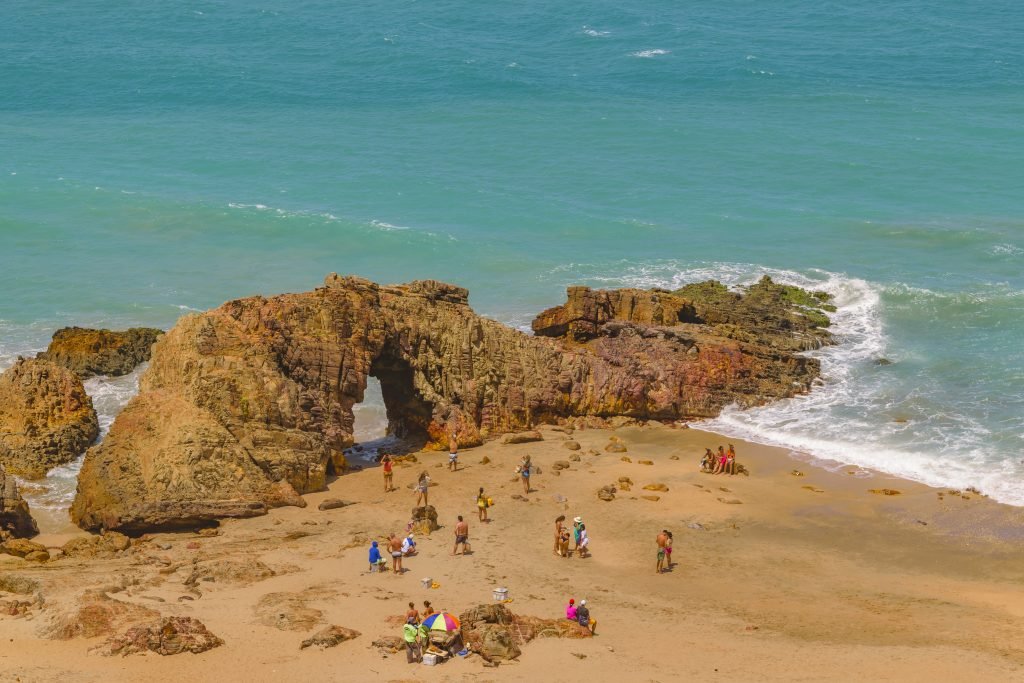
Brazil’s weather seasons are at opposite times from what they are in the United States and Europe. But its travel seasons are similar to ours: everyone wants to go when the lure of events and activities outweighs any negatives of weather or cost.
Summer in Brazil coincides with sunny but wetter months. It’s rainy year-round in much of Brazil, but summer sees an uptick in precipitation in many areas. (Daily afternoon showers can keep things a bit steamy.) The warmest temps of the year are bearably hot, typically averaging between 80°F and 89°F. However, along the coast, you’ll find everything from subtropical Sao Paulo’s 76°F to Rio’s soaring 104°F.
For those wanting to escape the cold and snow of a northern hemisphere winter, the Brazilian summer months from December to March are the perfect time to visit Brazil, particularly the coastal regions.
And if you happen to be in Rio during rainy weather, these are some suggestions of what to do when it rains in Rio , on our YouTube channel :
Things to Do
Brazil comes alive during the high season. Across the country, event calendars are chock full of festivals and religious and cultural celebrations. Then, starting with Carnatal (an off-season Carnival) in December, things stay lively until the Holy Week of Easter.
The Granddaddy of all celebrations, the world-renowned Carnival, is usually held in February or March, depending on when Lent begins. While Carnivals are held in many places in Brazil, the Carnival in Rio de Janeiro is the most famous and most visited of them all. Parades, elaborate costumes, and 24/7 music, drinking and dancing beckon visitors and Brazilians to cut loose and party.
Other events of note include:
- Reveillon: Upwards of two million partiers dressed in white crowd at Copacabana Beach in Rio to welcome the new year.
- Lavagem do Bonfim: Salvador’s festival of washing the church steps includes all-night dancing and revelry.
- Sommerfest: A summer repeat of Blumenau’s famous Oktoberfest has visitors enjoying brews and brats.
- São Paulo Restaurant Week: São Paulo invites everyone to experience the best in Latin dishes by offering great deals and special menus.
By the way, you can check out more of what to do in Salvador in this video right here:
Cons of Visiting Brazil During the High Season
While visiting Brazil during the high season has its benefits, there are downsides to this time of year. For most people, these aren’t deal-breakers but are definitely worth considering before making travel plans.
A few rain showers don’t deter the crowds from gathering on the beaches and in the cities to enjoy the warm weather and exciting events. Statista.com estimates that Rio’s Carnival in 2020 alone attracted 7 million visitors to its festivities: about 5 million locals and 2 million international guests. So if crowds aren’t your thing, find another time to visit!
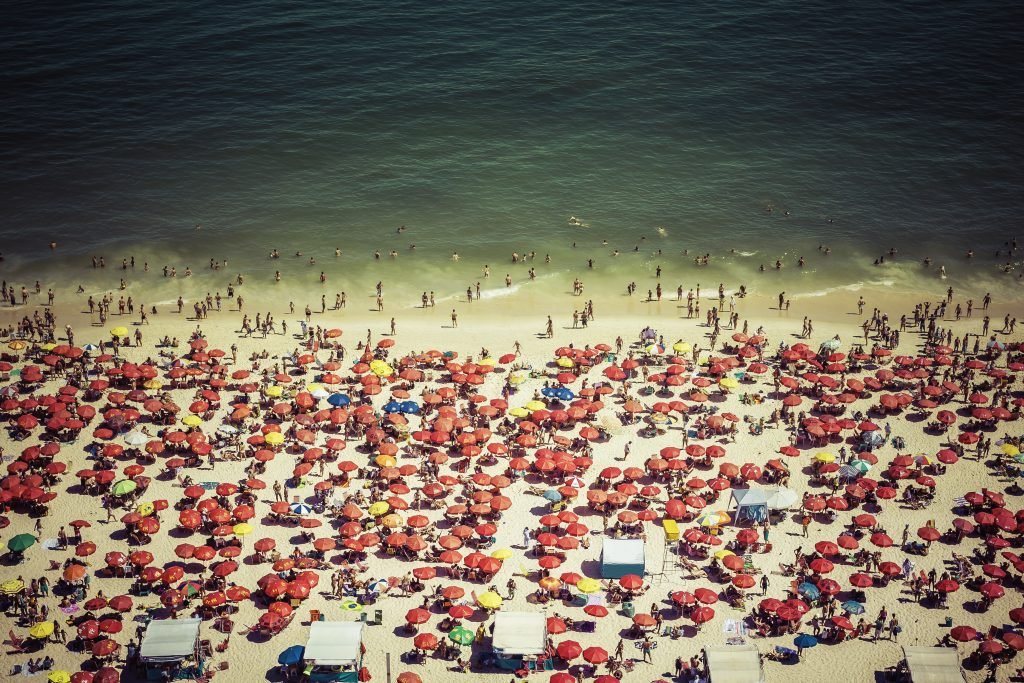
However, if you do decide to go to Brazil during high season to enjoy the beach, check out this video about beach etiquette on our YouTube channel :
Travel Costs
Because of these huge crowds, the principle of supply and demand comes into play. Hotel rooms are in short supply, which means higher rates. High season can also mean that hotels may require a minimum number of nights for a stay. Therefore, longer stays coupled with higher rates increase the overall cost of your trip during this time.
If you’re headed to Carnival, you’ll likely find flights to Brazil costing much higher as you get closer to the event. Some travel publications recommend booking flights and hotels several months in advance —even up to a year ahead for international visitors.
Pros of Visiting Brazil in the Low Season
The low season in Brazil is winter. Winter in Brazil runs from June through September and is the least popular time for a visit. This is most likely because far fewer festivals and celebrations attract local and international tourists. For some, though, that can be a good thing.
While Brazil’s low season rarely makes the list of best times to visit, it does have a lot going for it that will entice many visitors. For one thing, Rio will be quieter and less crowded for those who want to admire the history and partake of its culture and food scene.
It isn’t easy to pin down Brazil’s climate due to the size of the country and the diversity of its various regions. But winter, for the vast majority of Brazilians, is a welcome relief from the heat and humidity of summer.
Winter in the northern hemisphere may evoke images of snowbound vehicles and frigid temps for days on end. Brazil’s winter offers mild and dry weather in most of the country. Different cities see different temps, so it’s good to check your itinerary against the expected weather.
- Rio de Janeiro: Expect sunny days with highs around 75°F and chilly nights with lows into the 60s. There is very little rainfall.
- São Paulo: June is the coldest month, but even then, temps only average in the mid-60s.
- Brazilia: Daytime temps are a pleasant 77°F – 82°F year-round, although nights can dip into the 40s. Winter days are sunny and dry.
- Salvador: Pleasantly warm year-round; the temps here hang between low 80s and mid-90s. Occasional rain showers cool things off.
- The Amazon: Often called “summer” by locals, the official winter months include unpleasantly high temps that stay in the 90s but often rise above 100°F. June through August is drier, but significant rainfall occurs all year.
- The Pantanal: Temperatures can drop below 70°F, a welcome relief after sweltering heat and humidity during “winter.”
Things to Do During the Low Season
Partygoers might find the low season a bit boring compared to the amped-up vibe that overflows from December to March. Still, there are plenty of exciting activities to do and places to see during the low-key winter months:
- São Paulo Pride: The largest gay pride parade in the world happens in early June.
- Festival Nacional de Forró: Ten days of music concerts and dancing revs up Itaúnas.
- Festival Internacional de Pesca: Nearly half a million fishermen descend on Cáceres, Mato Grosso, to try and earn bragging rights for their catch.
- Festival de Gramado: This film festival highlights the best films from Brazil and Latin America.
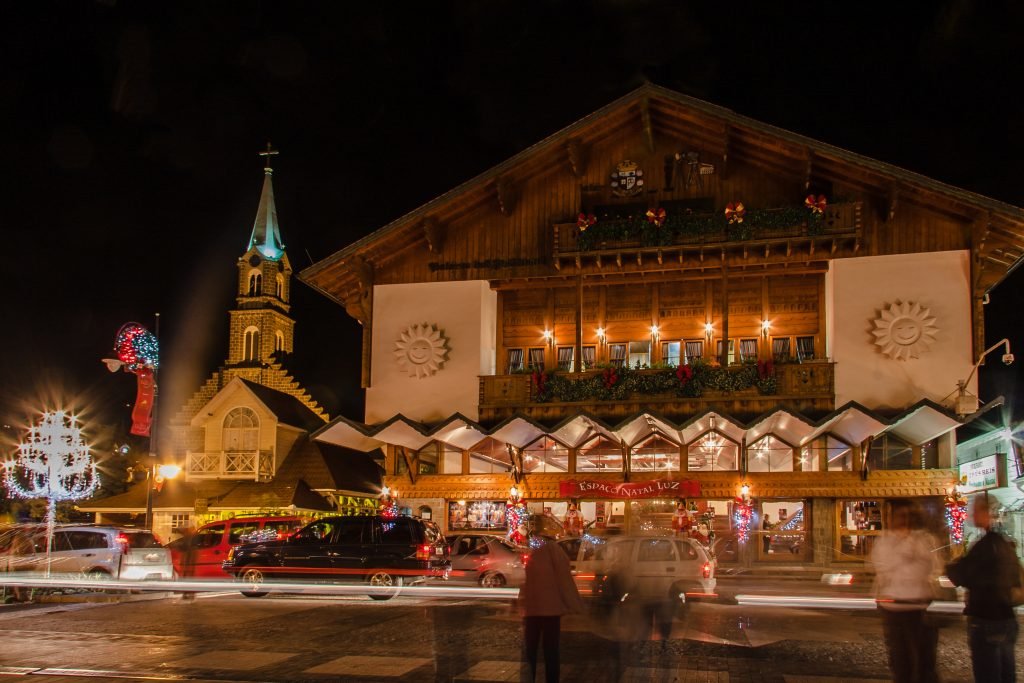
Brazil is home to two of the world’s most unique ecosystems: the Amazon River basin and the Pantanal. Both draw visitors to explore their wild and scenic beauty with boat rides and hikes that provide chances to see wildlife in its natural element:
- The Amazon: The dry season is the best time to visit the Amazon . Receding water reveals hiking trails and concentrates animals like pink dolphins into smaller areas, making them easier to spot. Visitors can explore further into the rainforest on the dry trails and enjoy canopy climbing and ziplining in the jungle.
- The Pantanal : The Pantanal is the world’s largest tropical wetland. It’s best to visit t he Pantanal during the dry winter months because much of the wetland is flooded and inaccessible during the rainy summer months. Cooler temperatures prevail but seldom drop below 68°F.
Once the rainy season waters have receded, wildlife emerges from the more remote parts of the Pantanal in search of waterholes. Wildlife viewing is at its best during these dry months.
Without the crowds of visitors vying for hotel rooms and flights into Brazil, prices are typically at their lowest during Brazil’s winter months.
One exception may be the costs of traveling to the Amazon or Pantanal. Since winter is a popular time to visit these natural wonders, properties may charge slightly more. Unlike Carnival, though, the difference is not significant.
Cons of Visiting Brazil in the Low Season
There’s no downside to visiting Brazil during its winter months of June through September. Sure, the weather may be a bit cooler, but in most places, it’s still not low enough to impact the quality of your vacation. Still, there are a couple of points to consider if you want to head to Brazil during the low season.
Limited Services
In some parts of Brazil, the low season may bring limited services for visitors. Local or regional transportation may not be easy to come by. The number of flights or inter-regional bus services within the country may limit travel options once in Brazil.
In the larger cities like Rio de Janeiro or São Paulo, you won’t see this as you might in smaller towns and more remote parts of the country.
School and Vacation Holidays
While not as busy as Rio during Carnival, July and August do see an uptick in the number of travelers throughout Brazil. According to Frommers , schools and universities in Brazil take their winter break for the whole month of July, and many Brazilians indulge in vacation travel. As a result, cities and must-see sites can be crowded.
The Brazilian winter coincides with the European and North American summer. With school out for the summer in those parts of the world, people tend to hit farther-away vacation spots to take advantage of the unencumbered time.
Pros of Visiting Brazil in a Shoulder Season
Shoulder seasons bridge the time between the high (summer) and low (winter) seasons. For Brazil, spring begins towards the end of September and goes through November. Fall lasts from the end of March through May. In general, spring and fall are wonderful times to visit Brazil.
- Spring and fall are much less crowded times throughout Brazil.
- Cooler temps flow into many parts of the country in the fall, but it’s still warm enough to enjoy days on the beach along the coast.
- In the spring, crowds are still smaller than in the high season.
- Many airlines and hotels offer off-season deals to entice visitors to plan a trip to Brazil.
For spring and fall, the number of tourists still remains low, as do the prices of hotels and travel costs.
Cons of Visiting Brazil During a Shoulder Season
Of course, like with any other season, there are a few notable cons to visiting Brazil during this window:
- In autumn, rains are still heavy in the Amazon and Pantanal, making travel there tricky and a lot of places virtually inaccessible.
- The Holy Week of Easter (usually at the end of March or early April) draws considerable crowds to festivals and celebrations. As a result, travel costs increase for this timeframe.
Final Thoughts
Brazil is truly a year-round destination. While the general rule of thumb says the best time to visit is between December and March, there are certainly compelling reasons to stay at other times.
Plan your trip to Brazil based on what you want to do and what works for your schedule. Then, no matter when you go, you’ll come away already dreaming of your return to this South American jewel.
While you’re here, I think we might interest you with these:
Brazilian winter: how cold does it really get? – If you’re planning on visiting Brazil during wintertime, then maybe you’ll need more than a light coat! Check out and see how cold it really gets where you’re going!
A Backpackers Guide To Brazil – When you’re planning a backpacking trip in Brazil, there is a lot to consider in order to make the perfect trip. Luckily for you, we have the ultimate guide right here!
12 Small Amazing Cities to Visit in Brazil – Sure Rio de Janeiro and São Paulo are lovely, but you’ll be amazed by these 12 charming small cities we listed for you to visit in Brazil!
Cover Photo: crowded Copacabana beach – Credit: ID 51749005 © Dabldy | Dreamstime.com
Bruno Reguffe
What's up, everyone! I'm Bruno, and I'm a nutritionist living in Rio de Janeiro. I've been a longtime friend of Ana's, and I'm excited to help her expand on all things Brazilian with y'all, as well as sharing some of our culture and a few personal experiences while living in the country!
Recent Posts
11 Best Neighborhoods to Stay/Live in Salvador (Bahia)
Salvador is the fourth most populated city in Brazil, as has been attracting more and more tourists interested in the local culture and paradisiac beaches. The city also houses many great...
X Best Neighborhoods To Visit/Live in Florianópolis
If you know about Florianópolis (in Santa Catarina), then you probably think that the city is all about beaches and tanning. Well, although that is indeed one of the city's main highlights,...


BRAZIL | BEST TIME
When is the best time to go to brazil, best time to visit the brazilian amazon, best time to visit north east brazil, when is carnival season in brazil, best time to visit the pantanal for wildlife, start your journey.

DESTINATIONS
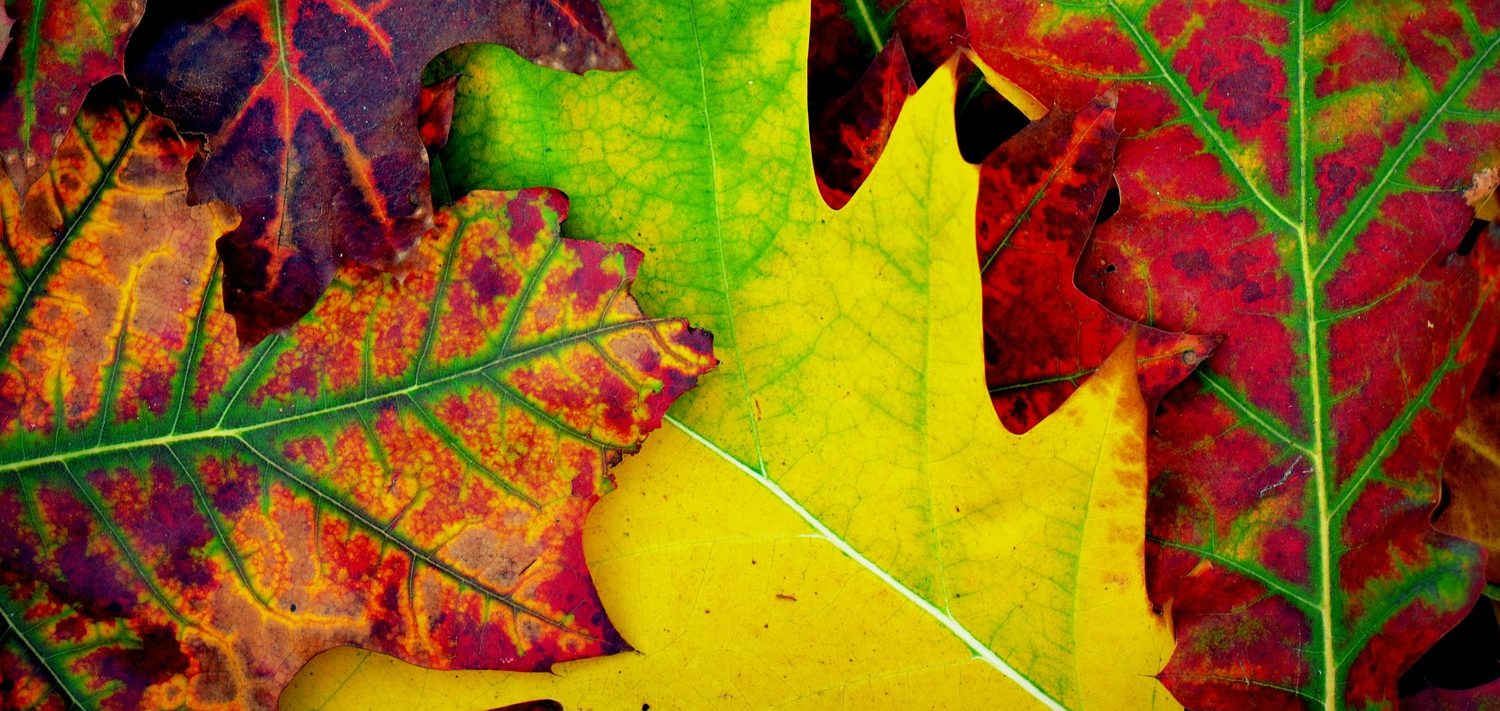
Pick the best time for your vacation in the land of Samba !
Choosing the right time for your vacation is key to making the most of brazilian weather.
When to visit Brazil is one of the most important pieces of information regarding your trip.
Brazil is a huge country and the different regions that you will visit during your vacation each have specific weather conditions. It is good to have an idea of them before planning your vacations.
Imagine a stay in the Amazon at the height of the rainy season when you want to enjoy the beaches. Or a visit to Lençóis do Maranhão in December when all the lagoons have evaporated … difficult not to be disappointed!
In this section, we invite you to learn more about the climate of the different regions and cities that you might want to visit during one of our tours.
The weather conditions in major regions of Brazil
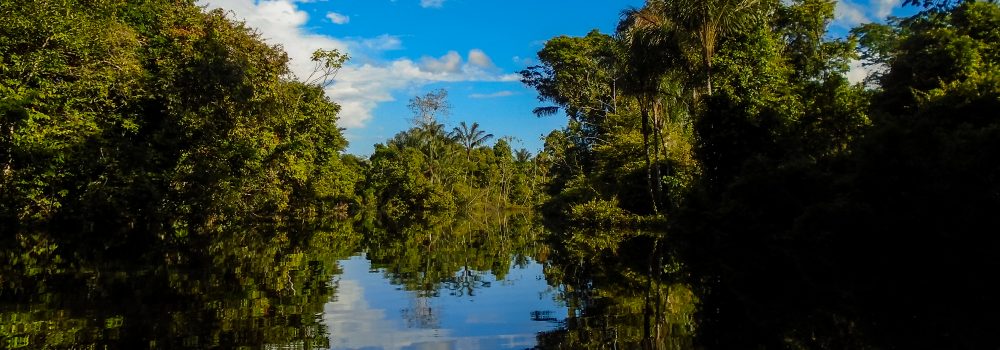
The Northern Amazon region has a typical tropical equatorial climate. The temperature can range from 28°C on the coast of Pará to reach 40°C in western Amazonas, far from the coast. In the forest, the humidity level reaches 100%! The rain falls regularly all year in this region but there is much more rainfall from December to May, so it’s known as the rainy season . Then, the level of the Amazon and its tributaries can rise by more than 10 meters in places, leaving vast expanses of forest under water which are then called Igapós (flooded forests).
Manaus, a constant temperature and two distinct seasons
The city of Manaus has an equatorial climate with monsoon influence (type Am according to the Koppen classification). Temperatures are subject to daily variations essentially related to the sun’s path in the sky, the seasonal variations being too small to be significant. As for rainfall, it fluctuates considerably during the year with very heavy rains from November to May (maximum of 315mm in March) during the “rainy season” and much less rain from June to October (minimum of 57mm in August).
Belém, The town where people meet up before or after the rain showers!
In Belém, the state capital of Pará, the hot and humid equatorial climate is influenced by both the Atlantic Ocean and the surrounding jungle. One of the oddities of Belém is the torrential rain that falls every day at 5p.m. for about fifteen minutes! Perfectly integrated into the local way of life, it is a time marker and the locals are used to dividing up the end of the afternoon. It is not at all a problem when visiting the region.
In this part of the Amazon, the seasons are less pronounced than inland. However, there are two periods: the “Chuva”, which extends from January to June (sometimes torrential rains), and the one that goes from July to December (the “dry” season), which is the best time to travel to the region of Belém and Marajó.
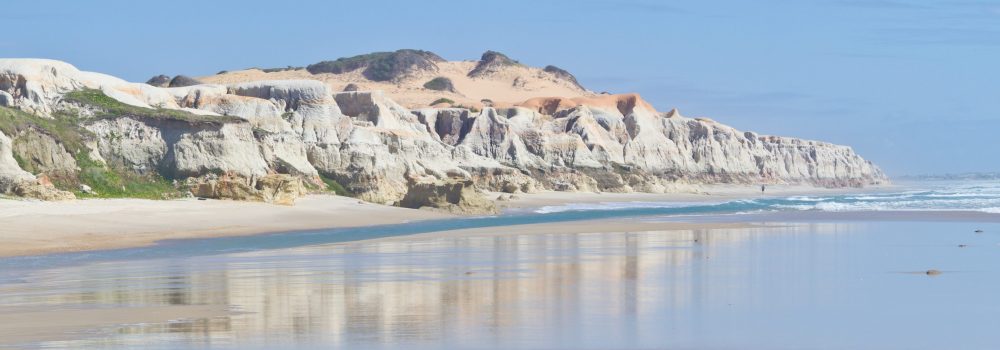
The Northeast
The Northeast is practically on the equator, and is a vast region with a generally semi-arid climate, it is hot and dry, punctuated by short rainy episodes. These usually last a few days and take place between March and June. They are more or less numerous depending on how close you are to the Atlantic coastline.
In the northern part of the Northeast, the rainy season is irregular. Some years it rains very little, others more. Since 2010, the interior of the land (inland from the coast) has been victim to drought, but it never gets cold … meaning from August to November, you are almost 100% sure to have sunshine. The annual temperature variation is low in the states of Ceará, Rio Grande do Norte, Alagoas and Pernambuco with an average of between 25 and 30°C.
Further south in the state of Bahia, the variations are more defined and the rainfall more abundant in the rainy season. It is therefore best to avoid this region between March and May.
In Ceará (from Canoa Quebrada to Jericoacoara), a warm climate with sunshine all year round
Although the state of Ceará has a semi dry climate, the particular geographical location of Fortaleza, its capital, has special weather conditions. The Serras , (mountains covered with forest) encircle this area and form a trap for the clouds in the rainy season.
They make the summer rains more frequent in the city and its surroundings than in the rest of the state. However, they are short-lived and usually occur early in the morning or at sunset.
The average annual temperature is 26.5°C, with December and January as the hottest months and July the coldest, but the differences are minimal. The average rainfall is about 1600mm. The rains, when there are some, are concentrated between February and May.
Bahia, a tropical climate with a slightly heavier rainy season than the Northeast.
The coast of Bahia is characterized by a tropical climate with an annual temperature of more than 30°C and an obvious rainy season. Inland the weather is much more unstable and can be particularly dry. There are years when it may not rain at all in parts of the state of Bahia.
The wet season, in and around Salvador de Bahia, runs from April to June with short light showers. However, it is possible to have a combination of temperatures down to 18/20°C with rainfall for several days in a row. It is therefore necessary to bring appropriate clothing if you expect to travel at this time and avoid planning a beach holiday in Bahia.
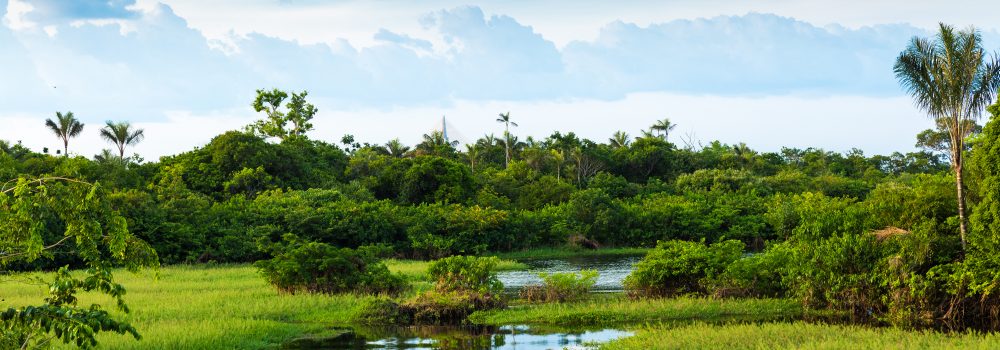
The centre of Brazil, the North & South Pantanal
The Pantanal is a broad plain with two faces: a vast savannah interspersed with waterways and lakes in the dry season and in the rainy season it turns into a huge shallow marsh from December to May.
The average annual temperature is 25°C, but large differences occur throughout the year, ranging from 0 to 40°C. The region has an austral summer or rainy season that floods the great plains. Combined with extreme heat and hordes of mosquitoes, it makes stays in the Pantanal challenging for more sensitive travelers. It is therefore advisable to avoid the months between October and February. The best time to visit the region is from April to October, when the waters come down again. Beware though! Temperatures can drop sharply at this time, come equipped accordingly!
Campo Grande and the Southern Pantanal have two distinct seasons.
As in the rest of the Pantanal Region, the seasons are characterized by a wet period with rains flooding the region and hot weather during the local summer. There is a drier and cooler climate at the beginning and end of the day during the summer. Winter is the best time to travel in the region.
Cuiabá, a typical tropical continental climate (Northern Pantanal)
The city of Cuiabá, in Mato Grosso, is known to be one of the warmest in Brazil, with temperatures well above 30°C for most of the year. However, you may also be confronted with cold temperatures down to 10°C in the evening. The best period to come to see the animals is between May and September. It is therefore advised to bring warm clothes so as not to find yourself shivering on vacation!
Minas Gerais, A humid climate, warm in the summer & cool in winter
The climate in the central Minas Gerais region is tropical but changes with altitude. In this mountainous state, the highest and most southern regions have lower temperatures that can sometimes get down to 0 °C on a winter’s night.
The other parts of the region are characterized essentially by a high rainfall index guaranteeing green landscapes, but also a greater stability of local temperatures with about fifteen degrees of annual variation. Minas Gerais is therefore a state that can be visited all year round without any problem; just bring adequate clothing to enjoy the cooler months of the year.
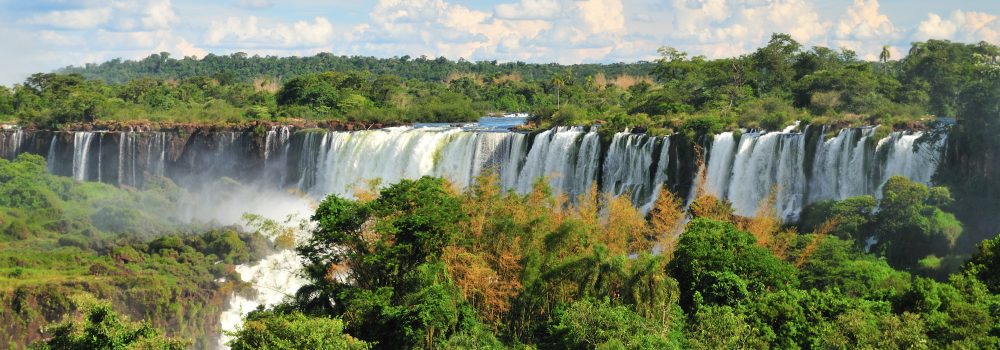
The Southern region
The south of Brazil has a rather paradoxical climate for Europeans. The wettest months are the hottest. Indeed, the local winter between June and September, is certainly cooler but especially drier than summer. It is characterized by high temperatures resulting in significant evaporation in this very green region, this can cause violent storms. It is therefore better to visit the region during the time of the summer holidays in Europe.
Rio de Janeiro, a city and a state you can visit all year round
The city of Rio is located in the tropical zone. Indeed, the Tropic of Capricorn is only a few degrees south of Rio. The climate is therefore humid with hot and dry seasons in summer, and heavy rain, cold and wet in the winter (from June to August). There are some local differences due to the altitude such as in Petrópolis where the temperature is cooler. The average annual temperature is 24°C and the rainfall is about 1,200mm per year.
The city of Rio is located in the southern hemisphere. The summer season lasts from December to March and is wetter than the winter season, which lasts from June to September. In winter short cold snaps from the Antarctica can lower the temperature to around 15°C for a few days, so be careful not to forget to pack warm clothing for the evenings.
Iguaçu, a place to discover during the “tropical winter”
A subtropical climate, with two distinct seasons: one hot and humid in the summer (from September to May) and another, dry and cool, in the winter (from June to August). The annual temperature of the city is 23.8 ° C, but can reach up to 40 ° C during the summer and down to -5 ° C in winter! The average temperature in summer is 26.5 ° C and in winter 15.4 ° C.
Beware of any possible cold spells, and plan to bring some warm clothes. In general, the city is sunny all year round but it can rain in the spring and summer. Short thunderstorms are quite common.
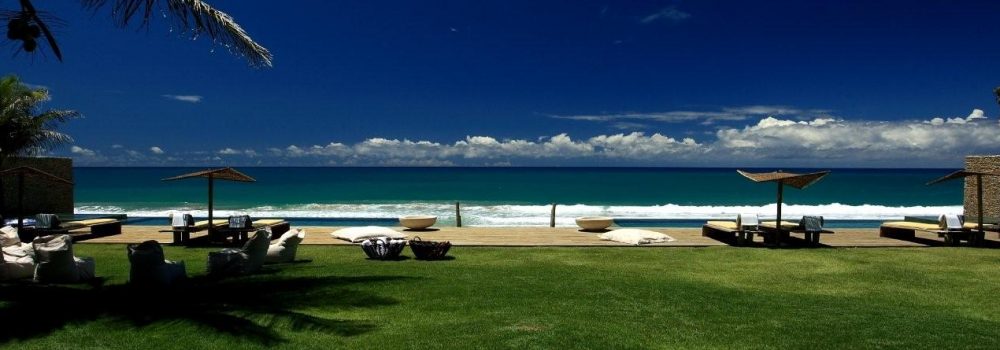
Brazilian hotel seasons
For hotels in Brazil, there are generally two seasons: the high season, which corresponds to the Brazilian school holidays, from the end of December to the beginning of February (depending on the dates of the Carnival) and from the end of June to the beginning of August, and the low seasons are outside of these high season periods.
It should be noted that some hotels also have an intermediate season or even other classifications: for example high season and super high season. In recent years, with the success of Kite Surfing, more and more hotels in the seaside resorts of Ceará and other parts of the Northeast extend the high season until November.
It should be noted that in low season, it is of course easier to find rooms and the hotels are quieter. It may be interesting to travel at this time of the year if you are looking for a more relaxing holiday.
Bank holidays in Brazil
It is important to note the famous bank holidays in Brazil where prices can become astronomical (4 to 5 times normal prices), especially for New Year’s Eve, carnival and Easter which are the most popular. Add this to the fact that most places only accept a minimum stay of several days during these periods, usually between 3 and 5 nights minimum.
If you still want to travel during these times of the year, it is strongly recommended that you book well in advance.
Apart from the periods mentioned, there are still six other dates, that move slightly from one year to another and which are also holidays. These are Tiradentes on April 21, May 1, Corpus Christi in late May / early June, Independence Day on September 7, Nossa Senhora Aparecida on October 12, Finados on November 2, the Proclamation of the Republic on November 15.
In general, with the growing success of Brazil’s tourist destinations and a still relatively limited supply of quality establishments in many regions, the sooner you book, the more likely you are to have an excellent trip. As it gets closer to around three months before your trip, it gets more complicated to find what you want.
Discover other sections for more information on your vacation with Brazil Selection
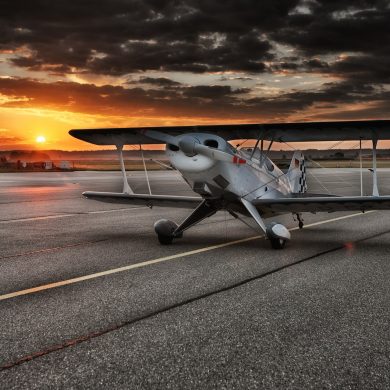
Essential Information
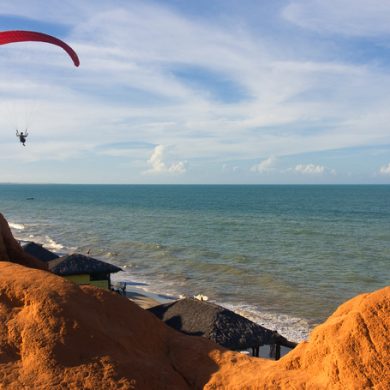
General and special sales conditions

Cost Estimation Tool
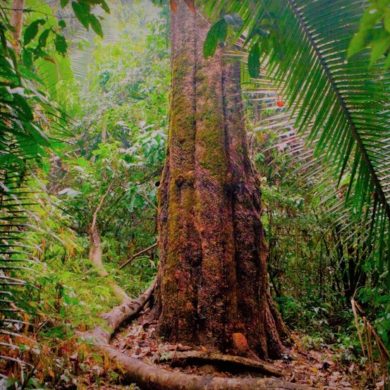
Brazilian Culture

- Brazil Tours
- Brazil Travel Guide
- When to Visit Brazil
Best Time to Visit Brazil
- Jan Avg Daily: 30 ° C Avg Nightly: 23 ° C
- Feb Avg Daily: 30 ° C Avg Nightly: 24 ° C
- Mar Avg Daily: 29 ° C Avg Nightly: 23 ° C
- Apr Avg Daily: 28 ° C Avg Nightly: 22 ° C
- May Avg Daily: 26 ° C Avg Nightly: 20 ° C
- Jun Avg Daily: 25 ° C Avg Nightly: 19 ° C
- Jul Avg Daily: 25 ° C Avg Nightly: 18 ° C
- Aug Avg Daily: 26 ° C Avg Nightly: 19 ° C
- Sep Avg Daily: 25 ° C Avg Nightly: 19 ° C
- Oct Avg Daily: 26 ° C Avg Nightly: 20 ° C
- Nov Avg Daily: 27 ° C Avg Nightly: 21 ° C
- Dec Avg Daily: 29 ° C Avg Nightly: 22 ° C
- ~ mins read
As Brazil occupies nearly half of South America, the country has diverse landscapes and climate zones. So there is no single best time to visit Brazil. Your holiday experience in the country will largely depend on where you want to go and when. Whether you seek the pulsating energy of Rio de Janeiro’s festivities or the serene tranquility of the Pantanal wetlands, understanding the nuances of the country's season will help you make the most of your trip to Brazil . This article explores the intricacies of the country’s weather patterns, seasonal highlights, and travel tips.
- Jackie Quirk
- Jackie Richey
- Shannon Patty
Quick Facts
Seasonal overview, summer in brazil — december to april.

Summer in Brazil is a symphony of sun-drenched days and balmy nights. The beaches are stunning during this season, with warm weather, clear blue skies, and perfectly surfable waves. Cities like São Paulo and Porto Alegre boast delightful weather, making it an ideal time to visit. Most travelers visit the country during this season. So, tour and accommodation rates tend to rise steeply. To secure your stay at the best places, make your bookings well in advance.
Highlights:
- Explore the Amazon rainforest that teems with diverse wildlife and vibrant flora during summer.
- Immerse in Brazil's lively summer festivals, especially the iconic Rio Carnival, featuring music, dance, and delectable cuisine.
- Enjoy surfing, scuba diving, and swimming in warm, crystal-clear waters along Brazil's coastline.
- Relax on Brazil's picturesque beaches, from Copacabana in Rio de Janeiro to the tranquil shores of Florianopolis.
- Hike scenic trails, embark on nature tours, and indulge in thrilling water sports.
- Visit sanctuaries and parks to see exotic birds and endangered species.
Travel tips:
- Book your accommodations and tours at least six months in advance, as summer is the high season in Brazil.
- Hire a guide when embarking on a wildlife tour or a hike in isolated locations, such as the Amazon jungle and the Pantanal.
- Pack lightweight, breathable clothing, and plenty of sunscreen.
In-depth seasonal guides: Brazil in December Brazil in January Brazil in February Brazil in March Brazil in April
Spring in Brazil — Mid-September to November

Brazil's spring offers pleasant weather and an explosion of colors. Witness iconic destinations like the Pantanal and the Amazon rainforest burst into life, showcasing their diverse flora and fauna. In the coastal regions, including Rio de Janeiro and Salvador, spring brings ideal beach weather, inviting travelers to enjoy the sun and surf. Springtime also marks the beginning of various festivals and events, celebrating Brazil's rich culture. Experience the joy of carnival preludes, savor fresh tropical fruits, and embark on nature trails to witness Brazil's natural wonders.
- Experience Brazil's stunning landscapes adorned with vibrant blooms that transform cities and countryside into a riot of colors.
- Explore the Amazon rainforest as it comes to life. Witness blooming flowers, migratory birds, and diverse wildlife in their natural habitat.
- Immerse yourself in spring festivals, including local carnival celebrations and lively street parties.
- Embark on nature hikes and eco-tours, discovering Brazil's rich biodiversity.
- Take a trip to Pantanal to spot wildlife, including jaguars and capybaras. With receding water levels, animals concentrate around water sources, providing optimal wildlife viewing opportunities.
- Visit coastal cities like Rio de Janeiro and Florianopolis for beach activities and water sports.
- Pack lightweight, breathable clothing for warm days, and bring a light jacket or shawl for cooler evenings.
- Plan outdoor activities and sightseeing in the mornings when the weather is pleasant. Spring days can get warm, so starting early allows you to enjoy outdoor attractions comfortably.
- Book accommodations in advance, especially if you are planning to attend festivals or visit popular destinations.
In-depth seasonal guides: Brazil in September Brazil in October Brazil in November
Fall in Brazil – April to May

Fall in Brazil paints a stunning panorama of golden landscapes. As the vibrant colors adorn the rainforests, it is an ideal season for hiking in the Amazon, exploring the historic streets of Salvador, and unwinding on the serene beaches of Florianopolis. Fall also marks the grape harvest season in the vineyards of Serra Gaucha, offering wine enthusiasts a delightful experience. Embrace the cultural richness at local festivals, savor seasonal delicacies, and witness the breathtaking Iguazu Falls in a more tranquil ambiance.
- Enjoy the peaceful beaches of Florianopolis, which sees fewer tourist crowds and pleasant weather during the fall season.
- Embark on scenic hikes in places like Itatiaia National Park to enjoy the vibrant fall foliage.
- Explore the Amazon rainforest and spot wildlife during mild weather conditions.
- Engage in local fall festivals like Oktoberfest in Blumenau, showcasing Brazil's unique blend of traditions and celebrations.
- Witness the grandeur of Iguazu Falls, which looks even more stunning during the autumn months.
- Visit Ouro Preto, a Unesco World Heritage Site, to admire colonial architecture amid fall colors.
- Book your accommodations in advance to secure the best places and avoid last-minute hassles.
- Pack clothes that you can layer to keep up with the weather changes.
In-depth seasonal guides: Brazil in April Brazil in May
Winter in Brazil – June to August

Winter in Brazil brings mild temperatures and clear skies, providing a refreshing escape. Explore iconic sites like Rio de Janeiro's Sugarloaf Mountain under crisp air, delve into the lush Amazon rainforest without oppressive heat and humidity, and wander around charming colonial towns. With fewer crowds around, winter is a perfect season for outdoor adventures, cultural discoveries, and savoring Brazil's diverse landscapes.
- Scope our birds and animals in the Amazon region of Brazil, as they tend to appear more frequently during the winter season.
- Head to mountain resorts in southern Brazil like Gramado and Canela for winter sports, such as skiing, snowboarding, and ice skating.
- Take a trip to Sao Paulo 's charming markets, like the Bazar da Cidade, where local artisans showcase handmade crafts, unique fashion, and gourmet delights.
- Attend Festa do Pinhão in Campos do Jordão, a winter festival celebrating local pine nuts. Experience traditional music, dance, and delicious pine nut-based dishes, making it a unique winter delight.
- Visit Gramado and Canela in Serra Gaucha, where winter turns these towns into cozy European-style villages. Enjoy chocolate tastings, wine tours, and the famous winter festival of Gramado.
- Unwind in thermal pools amid the crisp winter at hot spring resorts like Caldas Novas and Rio Quente.
- Visit Santa Catarina's coast for a whale-watching experience. Witness humpback whales migrating along the Brazilian shores.
- Bring warm sweaters and jackets if you are heading to colder destinations like Gramado and Petropolis.
- Visit museums, art galleries, and indoor markets during rainy days to make the most of your Brazil trip.
- Carry a water bottle and stay hydrated if you are engaging in outdoor activities. Some parts of Brazil can get hot even during winter.
In-depth seasonal guides: Brazil in June Brazil in July Brazil in August
To learn more about the best season to visit Brazil, read our comprehensive Brazil travel guide for month-to-month travel insight, things to do, and how many days to spend in Brazil. If you are planning a trip, talk to our travel experts to create your customized trip to Brazil .
Related Articles
Related categories.
- Brazil Travel Advice
- How Long To Stay In Brazil
- What To Do In Brazil
- When To Visit Brazil
- Where To Go In Brazil

Popular Destinations
- Europe Tours
- Everest Base Camp Trek
- Italy Tours
- Spain Tours
- Argentina Tours
- Canada Tours
- Sri Lanka Tours
- Chile Tours
- Antarctica Tours
We use cookies to analyze traffic and give you personalized content and ads. It's an essential part of giving you a great site experience. Click on the 'Accept' button if you agree with our use of tracking and analytical cookies. Please refer to our Cookie Policy for more information.

You are here
Seasons in brazil.
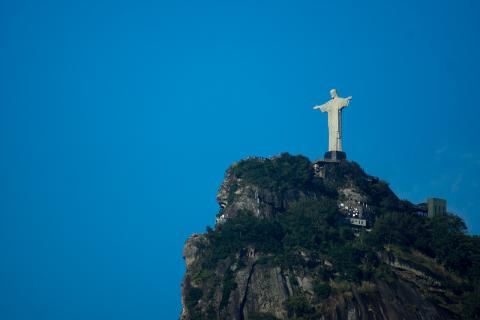
Brazil is an attractive and unforgettable country to visit in any season. The country has the Equator in the North, the Tropic of Capricorn in the South, the Atlantic washing the coastline in the East. That’s a paradise world you want to return again and again.
Amazon Plain occupies a wide aria of the country. Archaeologists say Amazonia once was a bottom of giant sea. Surprisingly, this puzzle land is not well researched. There’s a number of unfooted places never seen by human.
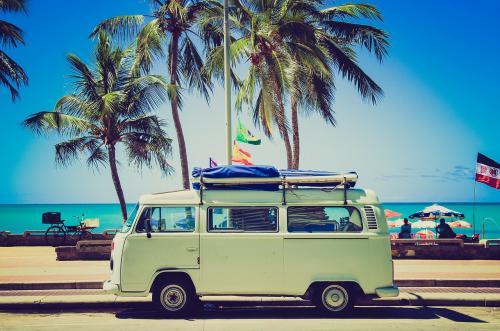
The summer in Brazil lasts the whole year round. Due to the Equator average year air temperature is 77~82,4 degrees Fahrenheit (+27~28 °C). It’s a little bit colder in the South mountain part, it’s a little bit warmer in the central part, and coastline air is always very humid. Winter differs from summer with the high quantity of rains only.
Brazilians adore holidays and know how to celebrate ‘em. The holidays may be for all the country (state holidays) or just for one part of it but they’re always colorful and fun.
Spring in Brazil
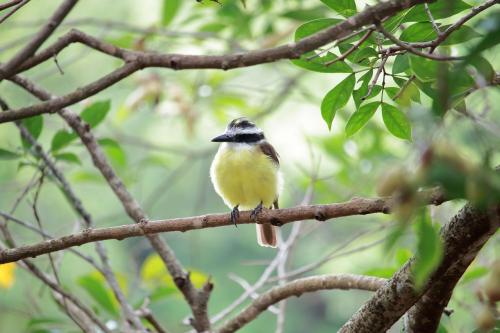
Autumn comes in the North hemisphere, but Brazilian September brings the Spring. The wet season starts with tropical heavy rains and thunderstorms. The nature regenerates, rank vegetation turn into bloomy surface. There’re especially many orchids, and their heady aroma makes feel dizzy. Cactuses, hevea (valuable caoutchouc resource), palm trees (there are more than 100 palm kinds!) and exceptionally beautiful lilies – all blooms.
Climate of the Spring Months
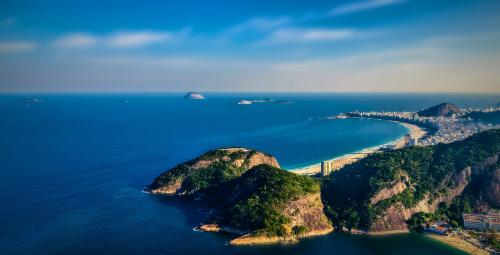
( Brasilia )
Spring Holidays
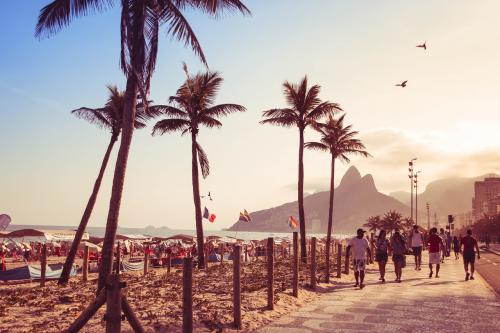
September 7 – Independence Day. The celebration includes military parade, and then people celebrate and have fun till next morning.
Octoberfest – more than 2 weeks of beer and music festival October 12 – Our Lady of Aparecida
November 2 – All Souls’ Day November 15 – Republic Day
Summer in Brazil
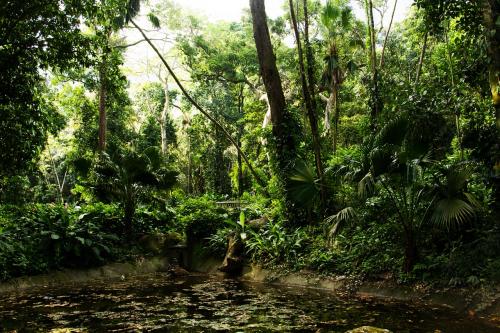
Hot Brazilian summer starts in December. The best time to swim is from December to March. And it’s time for main year holidays. They are Christmas, Reveillon or New Year, and Brazilian Carnival in Rio de Janeiro.
Brazilian celebration of New Years’ Day differs from our. On Revellion they wear white dress, make gifts, drink champagne and forgive old resentments. In midnight Rio de Janeiro citizens come to the coastline, enjoy the fireworks and throw white flowers into the ocean waves. That’s an unforgettable sight!
Brazilian Carnival in Rio de Janeiro is a grand event of global impact. The millions of tourists gather at Rio for a week of samba, day and night fun and tequila.
Climate of the Summer Months
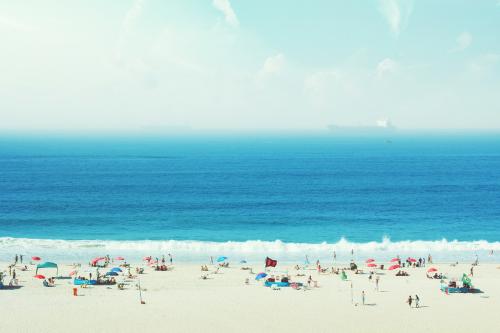
Summer Holidays
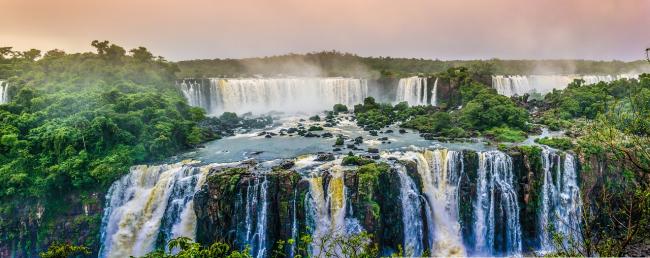
December 25 – Christmas December 31 – Reveillon
February – Brazilian Carnival Another national holidays are election days. There are a plenty of unofficial ethnic and religious holidays in Brazil. Octoberfest, Brazilian Carnival, Kinderfest, Fenaostra, Fenachopp, Musikfest, Schutzenfest, Kegelfest, Cavalhadas, Oberlandfest, Tirolerfest, Marejada are among them. Brazilians love their holidays very much, and anyone who ever participate these holidays understands why.
Autumn in Brazil
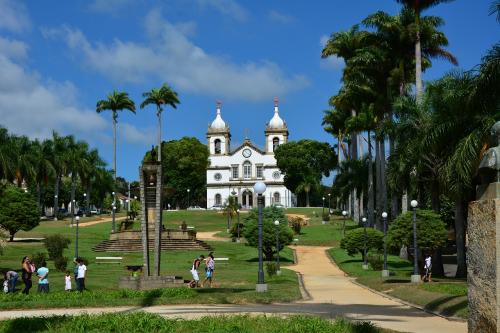
Brazil is situated in the Southern hemisphere, therefore the seasons are inverted. Brazilians meet the Autumn when our March and April come. There’re a little of spring holidays because the people harvest. And what do Brazilians grow? Coffee, the best coffee in the world. Surprisingly, Brazilians prefer the cocoa to coffee.
Brazilians grow and export apples, too. Local markets sell aplenty fruits from more than 30 banana kinds to exotic cherimoya, cocona, jabuticaba and noni.
Climate of the Autumn Months
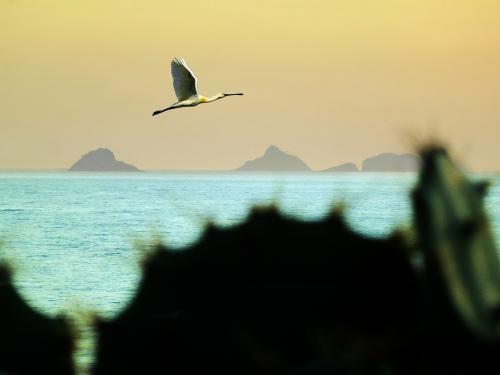
Autumn Holidays
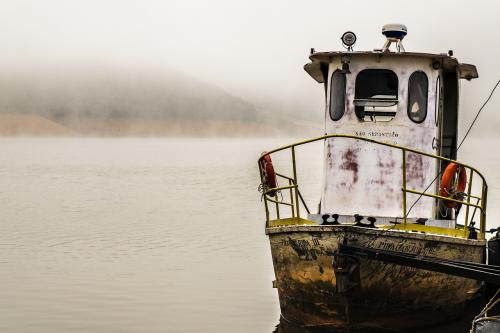
April – May - the Easter
April 21 – Tiradentes’ Day
May 1 – Labour Day
Winter in Brazil
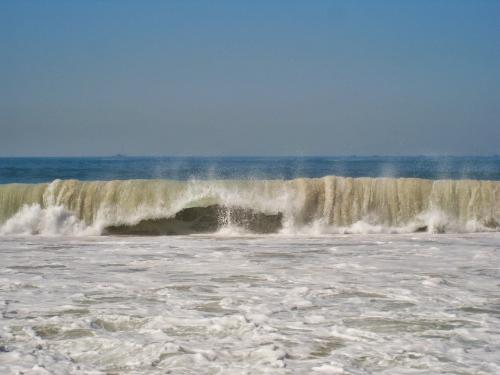
Winter time is from May to August. That’s the best season to travel through Amazonian jungle ‘cause the wild animals are far less aggressive in winter. Ocelots, jaguars and pumas hide in jungle. There are really a lot of monkeys like howler monkeys, guenons, bald uakaries, pygmy marmosets. One can see a quietly sleeping sloth on branches, or meet capybara or harpy eagle – the main predator among the birds. And you shouldn’t forget ‘bout caimans and huge anacondas.
Climate of the Winter Months
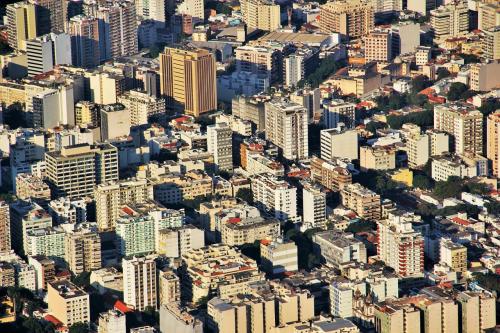
Winter Holidays
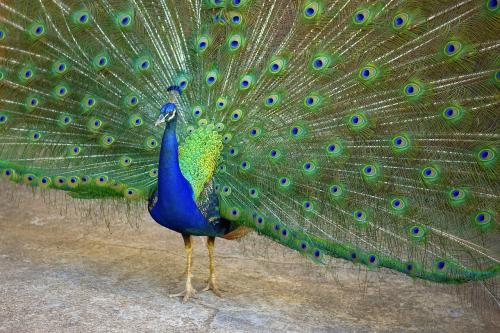
For Brazilian pupils: they have about a month of winter holidays.
Our project

Stay connected

Seasons of the Year
- About the Project
- Terms of Use
- Copyright & Permissions

Best Time to Visit Brazil

Climate Overview

Geographical location
Brazilian climate.
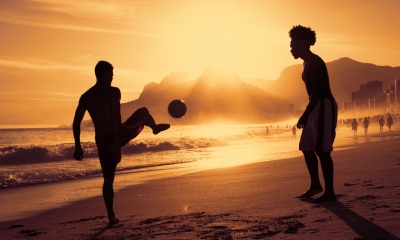
Beach Vacation in February

Best Time to Visit Brazil: Overview
When to go to brazil, best time to visit the regions, climate charts brazil.
In the following, you will find climate charts for the regions.
Furthermore, there are some charts you can use for quick comparison of climate between the regions.
Rio de Janeiro
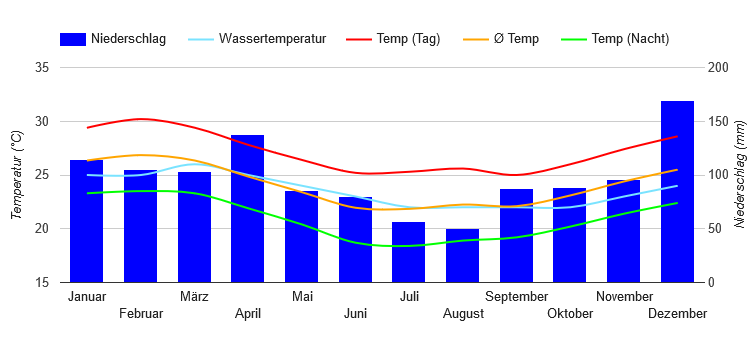
Porto Alegre
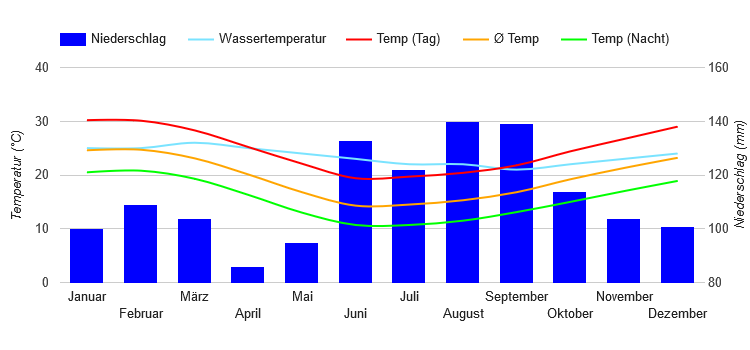
Day Temperatures
Night temperatures, average temperatures, water temperatures, precipitation, hours of sunshine per day.
Source of Data: German Weather Service (Offenbach) and Wikipedia
Climate Tables Brazil
Temperatures, precipitation, sunshine in rio de janeiro (brazil), temperatures, precipitation, sunshine in porto alegre (brazil), temperatures, precipitation, sunshine in manaus (brazil), temperatures, precipitation, sunshine in belém (brazil), temperatures, precipitation, sunshine in salvador (brazil), highlights of the country, popular activities, more attractions, current weather and forecast.
Important Regions and Cities

Activities and Attractions
Distances to brazil, where’s brazil, continent: south america, brazil: experiences of our visitors.

It was – as expected – sunny and warm. My peck stayed in the suitcase.
Weather Rating: 5 stars – Excellent

The weather in the Pantanal was almost unbearably hot and very humid. Already in the early morning the clothes stuck to the body!
Share your Experience and Win
Rio de Janeiro from the air
Destinations in the vicinity ….
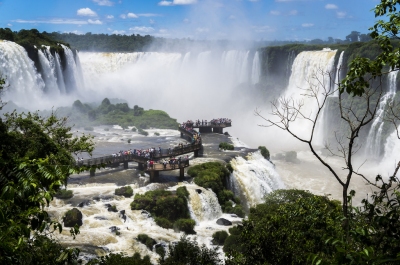
- Imprint / Privacy
- Image Sources

Weather and climate in Brazil

The climate in detail
- Equatorial climate - Amazon rainforest, Manaus, Belém, Salvador de Bahia
- Tropical climate - Boa Vista, Sertão, Fortaleza, Rio de Janeiro, Brasília
- The south - São Paulo, Florianópolis, Porto Alegre, Rio Grande
What to pack
Equatorial climate.
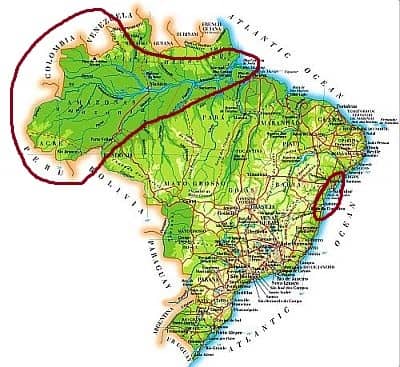
Amazon rainforest
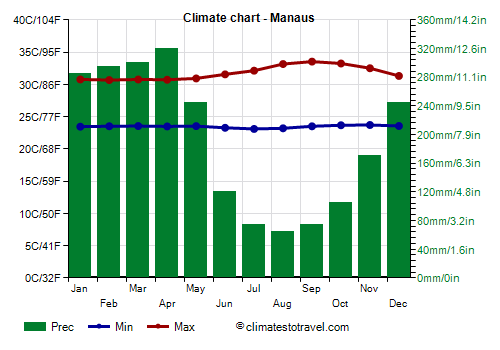
Salvador de Bahia
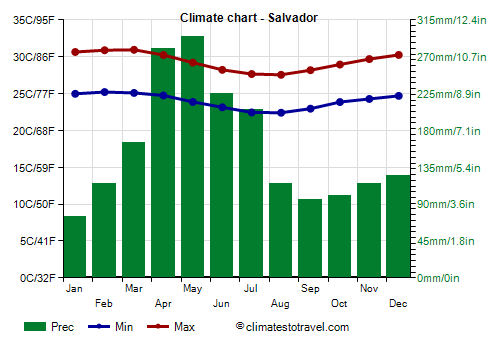
Tropical climate
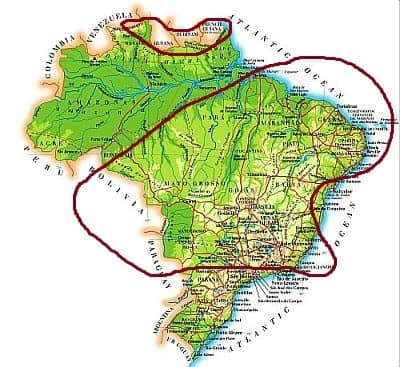
Rio de Janeiro
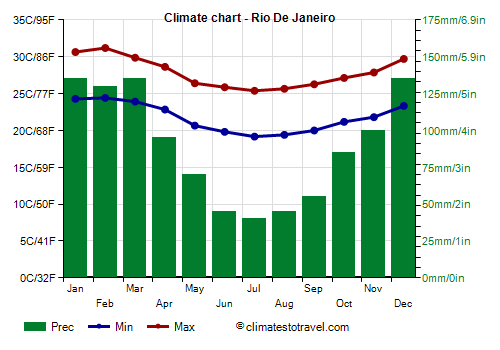
Porto Alegre
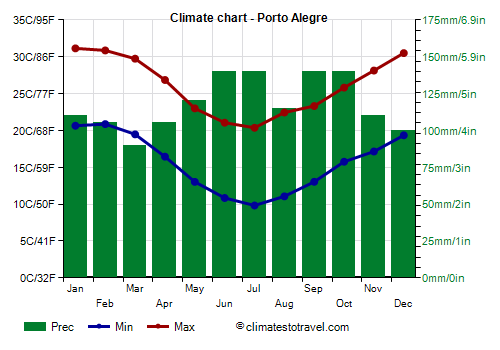
When To Watch ‘Love Is Blind: Brazil’ Season 4: Premiere Date, Episode Schedule, and More

Your changes have been saved
Email Is sent
Please verify your email address.
You’ve reached your account maximum for followed topics.
Quick Links
When is the release date for 'love is blind: brazil' season 4, is 'love is blind: brazil' season 4 streaming online, can you watch 'love is blind: brazil' season 4 without netflix, watch the trailer for 'love is blind: brazil' season 4, what's the episode schedule for 'love is blind: brazil' season 4, other international 'love is blind' editions to watch next'.
After the immediate success of Love Is Blind upon its release in 2020, the Netflix hit was further expanded into multiple versions set outside the U.S. One of them being Love Is Blind: Brazil , which follows the same format as its predecessor, matching singles who are ready to tie the knot sight unseen . Instead of being presented by the Lacheys, it is hosted by celebrity couple Camila Queiroz and Klebber Toledo , who are both established actors in Brazil and have found love while working on soap operas together.
This international iteration of the show quickly became just as popular as the American version and is now headed toward its fourth season. However, given that several couples that got hitched in previous seasons have since filed for divorce , the upcoming batch of episodes will be a little different from previous editions. The contestants that will be joining Season 4 have all been either previously married or had failed engagements. Now that they are ready to give love a second chance, they hope to find the right person while participating in this matchmaking experiment. Ahead of the reality show's return, here are some details about when it will be landing on Netflix.
Love Is Blind
*Availability in US
Not available
Singles who want to be loved for who they are, rather than what they look like, have signed up for a less-conventional approach to modern dating.
The first few episodes of Love Is Blind: Brazil - A Fresh Start will come out on June 19, meaning that it is almost time to catch up on the new love stories that will take place this season.
Season 3 came out less than one year ago, featuring most couples saying "yes" at the altar. However, many of the contestants who did make it down the aisle in Season 3 have not remained together. The only two couples that are still going strong are Agata Moura and Renan Justino , who have recently renewed their vows in a stunning ceremony, as well as Maria Carolina Caporusso and Menandro Rosa .
Yes, the show will be streaming online through Netflix, the official home for every edition of Love Is Blind . Similarly to previous seasons of Love Is Blind: Brazil, you will only be able to watch the reality show via Netflix. Although there were certain times that the season finales aired on YouTube, Netflix has since incorporated live streams onto the platform. Thus, the reunions will also be exclusively available through the streaming service. This also allows for there to be English subtitles for audiences who aren't proficient in Portuguese and want to know whether the couples they've seen go from the pods to the altar are still together.
As previously mentioned, there is no other way to watch Love Is Blind: Brazil - A Fresh Start without a Netflix subscription. For those who are considering which plan to choose from, here is a detailed breakdown:
Watch on Netflix
The official trailer for Love Is Blind: Brazil Season 4 came out May 22, and it gives viewers an inside glimpse at the latest edition of the show. The clips start off with the contestants arriving at the pods, where they might have the chance to find love a second time. As hosts Klebber Toledo and Camila Queiroz welcome new participants into the experiment, they wish them the best on their quest for a serious relationship outside the hectic, face-to-face dating scene. With several contestants chatting with other men and women that have similar interests or walk-of-life, everyone feels anxious at the possibility of leaving the show with a new spouse. Although the trailer hints at a few of them who have been proposed to, it is only when the couples go out on their honeymoon and live for a few weeks together that they will finally come to a decision about saying "yes" to their match at the altar.
For a more detailed look at what this season will be about, here is the official synopsis provided by Netflix:
All contestants on Love Is Blind: Brazil – A Fresh Start have already been in serious relationships but they still haven't gotten their happy ending. Is it finally their turn? This season's cast is made up of people who are divorced, separated, or got engaged but never made it to the altar. Now they're seeking the right partner, but they'll have to have the courage to (re)open their hearts.
Although the first episodes will come out on June 19, Season 4 will release the remaining episodes in two more sections. See the schedule below to know when each Part 2 and Part 3 will drop on Netflix:
The official number of episodes for this season has yet to be revealed, but considering that previous seasons had 11 each, Season 4 will likely have the same number.
Although Love Is Blind: Brazil has the most seasons out of any international iteration of the reality show, it doesn't mean that other versions of the show are less worth the watch. Here are two other editions of the Netflix hit to add to the watch list.
'Love Is Blind: Sweden' (2024)
Hosted by Jessica Almenäs , the Swedish version of Love Is Blind has singles from all over the country joining the experiment in the hopes of getting engaged and married by the end of the show. Season 1 came out earlier this year, and its finale was probably one of the most shocking of the reality franchise . Without giving too much away, a participant was rumored to be awaiting a child with a previous partner while getting to know his soon-to-be wife outside the pods.
'Love Is Blind: Japan' (2022)
Hosted by Takashi Fujii and Yuka Itaya , Love Is Blind: Japan is probably the least dramatic iteration of the franchise , with singles taking their time to get to know each other before proposing. With a few of them actually making it to the altar, there is a lot to cherish about the interpersonal connections. The age ranges in the Japan version are much greater than other editions of the show, with some participants in their early 20s while others might be in their 50s. As these pairings from within different age groups fall in love through a wall, their dynamics are impacted by their outlook on wanting or not to have kids right away.
Although the show was renewed for a Season 2, it was unfortunately cancelled by the streaming service, leaving fans disappointed that they wouldn't be able to see more Japanes couples pairing up.
Mountain View, CA
Mountain View
Around the Globe
Hurricane tracker.
Severe Weather
Radar & Maps
News & features, winter center, news / weather news.
Record-breaking fires consume Brazil’s Pantanal wetland
The early and intense wildfire season is threatening to exceed the worst blazes on record that in 2020 decimated a third of the wetlands and killed 17 million vertebrates.
By Aditi Sangal and Mia Alberti, CNN
Published Jun 17, 2024 9:23 AM PDT | Updated Jun 17, 2024 9:23 AM PDT

Smoke from a fire rises into the air in the Pantanal, the world's largest wetland, in Corumba, Mato Grosso do Sul state, Brazil, June 12. (Photo credit: Ueslei Marcelino/Reuters via CNN Newsource)
(CNN) -- Brazil’s Pantanal, the largest tropical wetland on earth, is ablaze, with fires in June breaking historical records for that month.
While aerial views of the wetland show smoke rising and the bright orange of burning fires, a closer look at burnt vegetation found charred skeletons of wildlife, including alligator, monkey and snake photos from Reuters showed earlier this week.

A view of a burnt monkey amongst the burnt vegetation in the Pantanal, the world's largest wetland, in Corumba, Mato Grosso do Sul state, Brazil, June 11. (Photo credit: Ueslei Marcelino/Reuters via CNN Newsource)
Brazil’s National Institute of Space Research (INPE) has detected 733 fires in the Pantanal biome so far this month, with the previous record for fires in Pantanal for June being 435 registered in 2005.
The state of Mato Grosso do Sul, which encompasses 60% of the Brazilian Pantanal, is under a “danger” warning for a heat wave expected to hit with temperatures 5ºC higher than average for the next three to five days, according to Brazil’s National Meteorological Institute (INMET).
The World Wildlife Foundation (WWF) Brazil has warned that the entire year of 2024 could become the worst year on record for the Pantanal as the dry season is just beginning, and the number of fires this year already represents an increase of 898% compared to the same period in 2023, according to INPE’s data.
“It is necessary to act quickly reinforcing [fire] brigades and counting with the support of the local communities to avoid a catastrophe”, said Cynthia Santos, conservation analyst for WWF Brazil, in a statement.
What to know about the wetlands
The Pantanal’s distinctive habitats rely on what scientists call the “flood pulse.” During the wet season between November and March, three quarters of the plain gets flooded, only for much of the water to drain away during the dry months, from April to September. This seasonal flooding makes the Pantanal a unique biome where large swaths of land regularly turn from terrestrial into aquatic habitats and back again.
Wetlands like the Pantanal are Earth’s most effective carbon sinks – ecosystems that absorb and store more carbon than they release, keeping it away from the atmosphere. At roughly 200,000 square kilometers, the Pantanal comprises about 3% of the globe’s wetlands and plays a key role in the carbon cycle.
When these carbon-rich ecosystems burn, vast amounts of heat-trapping gases are released back into the atmosphere, contributing to the greenhouse effect.
According to the World Wide Fund for Nature (known as the World Wildlife Fund in the US and Canada), the Pantanal boasts the greatest concentration of wildlife in South America – higher than that of its more famous northern neighbor, the Amazon.
“The Pantanal is very important for the planet, it has unique wild areas that are fundamental to life on Earth,” said Andre Luiz Siqueira, the CEO of ECOA, an environmental NGO based in the Brazilian state of Mato Grosso do Sul, speaking to CNN in 2020.
The area is home to thousands of endangered or unusual species, including jaguars, capybaras, black caimans, giant otters and hyacinth macaws. It’s also an important stop on the routes of around 180 species of migratory birds.
The wetland is facing a “hydrological crisis scenario” due to an intense drought. The lack of rain began in 2023 and has been aggravated by the ongoing El Niño phenomenon, according to ECOA.
Occasional wildfires are normal in the Pantanal, so much so that some plants in the region developed resistance to fires – for example by growing thick bark or covering their seeds with hard shells.
In 2020, the fires destroyed unique habitats and wrecked the livelihoods of many of the Pantanal’s diverse indigenous communities.
With previous reporting from Ivana Kottasová , Henrik Pettersson and Krystina Shveda

The-CNN-Wire™ & © 2024 Cable News Network, Inc., a Warner Bros. Discovery Company. All rights reserved.
Weather News

Plane believed found 53 years after disappearing over Lake Champlain

A foot of June snow in the Rockies while East swelters

New Mexico village evacuates as 2 fires converge
Accuweather early.
Top Stories
Heat Wave Alert
Trending today, hurricane center, forecast victories.
Weather Forecasts
Midwest, Northeast to face hottest weather in years
13 hours ago

Strengthening tropical rainstorm to bring intense rain, flooding to Gu...

Tropical threat may bring downpours to Florida, Southeast

Daily threat of powerful thunderstorms in central, eastern U.S.

Search continues for US tourist and two French women missing in Greece

Featured Stories
A year after the Titan tragedy, a sub plans to go to the Titanic
19 hours ago

Six Hajj pilgrims die from heatstroke in Mecca, as temperatures climb

Paris Olympics’ triathlon hangs in balance over Seine E. Coli levels

FAA investigating flight that came within feet of crashing into ocean

We have updated our Privacy Policy and Cookie Policy .
Get AccuWeather alerts as they happen with our browser notifications.
Notifications Enabled
Thanks! We’ll keep you informed.
- Share full article
Advertisement
Supported by
Flocking To
On the Brazilian Coast, a Tropical Town Beloved by Artists and Makers
A guide to Paraty, on the Costa Verde, with tips on where to stay, shop and island hop from the artist Vik Muniz and four other insiders.

By Nora Walsh
T’s monthly travel series, Flocking To , highlights places you might already have on your wish list, sharing tips from frequent visitors and locals alike. Sign up here to find us in your inbox once a month, and to receive our weekly T List newsletter. Have a question? You can always reach us at [email protected] .
Roughly halfway between São Paulo and Rio de Janeiro, the coastal town of Paraty (population 45,000) isn’t the easiest place to reach. It requires a four-hour, mostly mountainous drive from either city, a 45-minute helicopter charter or arrival by sea. It’s that relative seclusion that keeps the tourist hordes and unbridled development at bay, despite the town’s obvious appeal. Set on Brazil’s Costa Verde, with mountains covered in rainforest on one side and the emerald green waters of Ilha Grande Bay on the other, Paraty (pronounced para-CHEE by locals), preserves more than 30 blocks as its historic quarter, a grid of pedestrian-only cobblestone streets lined with whitewashed 18th- and 19th-century facades, many of them remnants of the Portuguese colonial era.
Starting in the mid-1600s, the town grew prosperous as a seaport during the country’s gold rush (many of the biggest gold mines were in the neighboring inland state Minas Gerais) — and as a hub for the slave trade. African slaves not only worked in the mines but built much of the town’s early infrastructure, such as its roads. Once the gold stopped coming through Paraty for export in the early 1700s, the town continued to harvest sugar cane and produce cachaça, the national spirit, before shifting its economic focus to the coffee trade. At the end of the 19th century, Santos, 190 miles to the south, supplanted Paraty as the country’s primary coffee-exporting port, and the town began to languish. “It fell off the map,” says Luana Assunção, the owner of the Rio-based travel company Free Walker Tours. “It became isolated and poor. Many houses were abandoned.”
By the 1970s, a new highway and an influx of urban transplants had given Paraty an infusion of new life. Lured by the area’s affordability, a number of artists, designers and other creative types began renovating the old mansions and opening a handful of galleries, boutiques, cafes and small hotels, turning the long-forgotten town into an alluring vacation destination.
“I was worried that mass tourism would endanger the future of the culture and the nature in Paraty, but it didn’t happen,” says the nature photographer Dom João de Orleans e Bragança, who has been visiting Paraty since 1968 and now lives there most of the year. He credits the strict building codes for imbuing the town with a certain timeless quality, even after the pandemic when the area’s second-home owners began spending more time in Paraty. “You’ll never see a skyscraper, and we don’t have big resorts or hotels here.”
What Paraty does have is easy access to the dozens of small islands and sandy coves across the bay (local traineiras , renovated wooden fishing boats; large schooners; and speedboats are all available for visitors to rent for daylong outings), and the countless hiking trails, waterfalls and beaches that are part of the massive Serra da Bocaina National Park. Visitors can also make day trips to a handful of villages home to Indigenous and historic Black settlements that have maintained a strong cultural identity. “There’s layer upon layer here,” said Lena Santana, a Brazilian costume and fashion designer who has been living in Paraty for the last decade. “It creates a certain kind of depth that makes people want to stay.” Here, Santana and four other locals and longtime Paraty visitors share their recommendations for where to stay, eat and explore.
The Insiders
Silvia Furmanovich , a fine-jewelry designer based between São Paulo and New York City, has been traveling to Paraty every other year for the past three decades.
The artist and photographer Vik Muniz , who lives in Rio de Janeiro and New York City, has been visiting Paraty since 1999.
Diana Radomysler is a partner and director of the interiors and design department at the São Paulo-based architecture firm Studio MK27. She travels to Paraty annually with her family.
Lena Santana , who was born in Salvador, Brazil, and moved to Paraty a decade ago after 15 years in London, owns a boutique, Atelier Napele, in the historic center, and Bus Stop Paraty, a guesthouse, 12 miles outside of town in Playa Grande.
Gisela Schmitt , originally from São Paulo, is the chef and owner of Paraty’s Gastromar restaurant and a boat-catering company.
Illustrations by Richard Pedaline
“I love to stay at Casa Turquesa , built on the ruins of an 18th-century mansion in the old town. Everything in the Turquoise Suite is white and turquoise, from the fabrics to the artwork. One room has prints from the British botanical artist Margaret Mee, who spent decades traveling to the Amazon documenting flora, which have inspired my work in the past.” (Rooms from about $520 a night.) — Silvia Furmanovich
“I always suggest that friends stay at the Pousada Literária de Paraty, a cozy hotel within a cluster of historic mansions that surround a tropical garden — they return enchanted by both the hotel and its restaurant.” (Rooms from about $350 a night.) — Diana Radomysler
“The Brazilian travel company Matueté has a selection of villas. You can rent the interior designer Linda Pinto’s house in the historic quarter close to the waterfront. It has a beautiful courtyard, so the house is flooded with natural light.” (Rentals from about $1,500 a night, with a three-night minimum.) — Gisela Schmitt
Eat and Drink
“At Banana da Terra , the chef Ana Bueno cooks contemporary Caiçara [the main Indigenous community of the area] cuisine in a charming restaurant in the historic quarter. She offers things like mango and shrimp salad and a hamburger made with crab meat. After dinner, go to Gelateria Miracolo for ice cream and try the flavor made with cupuaçu, an Amazonian fruit that’s closely related to cacao.” — S.F.
“Head to Graúna [about 12 miles north of Paraty], a beautiful valley in the Atlantic Forest, for lunch at Le Gite d’Indaiatiba . The chef is like a wizard of the forest. She makes her ravioli with taioba, an edible plant from the jungle [similar to collard greens]. Call ahead and ask them to prepare the sauna, which is next to a swimmable waterfall on the property.” — G.S.
“ Fugu Japanese Food is a new restaurant that serves fish that’s been caught fresh the same day, like sororoca [a white local fish] and prejereba [tripletail]. Don’t miss the tuna starter with locally grown shiitake mushrooms or the teishoku, a wooden box with 12 different small portions of menu items, including the day’s fresh catch. There’s also a great sake selection. For dessert, have the wasabi ice cream.” — D.R.
“Recently, one of my favorite designers from São Paulo, Flavia Aranha , opened a store in Paraty. Her pieces are timeless, produced in organic fabrics or natural fibers dyed with Brazilian plants and herbs.” — D.R.
“For handwoven baskets, go to Cestarias Regio Paraty in the historic center. They come in all sizes and are made by local communities. I love the ones made from covo, a fiber extracted from bamboo, that are used to go fishing.” — G.S.
“Visit the village of Cunha in the Paraíba Valley, where the Japanese couple Mieko and Toshiyuki Ukeseki started firing ceramics in a noborigama [a traditional Japanese wood-fired chamber kiln] in the 1970s. A small community of ceramists joined them, and you can buy their pieces at their ateliers or at the ceramics festivals that Cunha hosts throughout the year.” — L.S.
“To pick up authentic Indigenous arts and crafts, such as vases and musical instruments, go to Canoa Arte Indígena . I bought several baskets from there that now decorate my office in São Paulo.” — S.F.
“Paraty has some of the best cachaça in Brazil. My favorite brand is Cachaça Maria Izabel . [Maria Izabel] and her daughters own a sugar cane plantation in Sítio Santo Antônio, about six miles north of Paraty, where they still produce the spirit by hand. You can do a tasting at the distillery and buy bottles there, or at shops in town.” — V.M.
“The Livraria das Marés is a big-city bookstore in a small town. It’s a contemporary space designed by the architect Bel Lobo with black metal shelves and a wood-paneled floor and ceiling. There’s a delightful cafe at the back.” — D.R.
“Don’t miss Saco do Mamanguá, which is the world’s only tropical fjord. You can only get there by boat, and you’ll pass Caiçara villages along small beaches. From there, you can hike to the peak of Mamanguá’s Pão de Açúcar for dramatic views of the entire Ilha Grande Bay. Another option is to rent kayaks at one of the beaches and paddle deep into the mangroves at the very end of the fjord.” — G.S.
“ Fazenda Bananal is a great place to take children. It’s a nature preserve in the forest with a farmhouse. There are walking trails, farm animals and a restaurant called Ninho that’s absolutely incredible. Many of the ingredients come from the farm. I had the best slow-cooked pork of my life there.” — V.M.
“Visit Quilombo do Campinho [a settlement about 10 miles south of Paraty founded at the end of the 19th century by formerly enslaved people]. There’s a restaurant that serves fresh grilled fish and a shop with beautiful wooden animal sculptures, rugs made of straw, bamboo furniture and jewelry made from local tropical seeds. On the way home, stop at the village of Paraty-Mirim, where you can buy artisanal wares from the Guaraní tribe; then swim at its gorgeous beach, which is bordered by mountains and a river.” — L.S.
“One of the best ways to enjoy Paraty by sea is to book Gisela Schmitt’s Sem Pressa boat tour, which takes you to the surrounding coves and swimming spots (my favorite is Saco da Velha) while offering delicious local plates like cachaça- and beet-cured prejereba [tripletail fish], fresh oysters and mussels.” — V.M.
Practical Matters
“It’s fun to be in Paraty during one of its festivals. There’s FLIP [Festa Literária Internacional de Paraty], a large and influential literary festival [this year it will be held in October] and loads of other events throughout the town.” — L.S.
“The best time to visit is from May to August, when there’s less rain, the sky is beautiful and the sea is wonderful.” — G.S.
These interviews have been edited and condensed.
A picture caption with an earlier version of this article misstated the types of crafts that are sold at Canoa Arte Indígena; they include baskets, ceramics and beaded jewelry, not feather headdresses.
An earlier version of this article referred incorrectly to the fish served at Fugu Japanese Food. Most of the fish on the menu are caught fresh that same day, but not all of them.
How we handle corrections
Explore T Magazine
A Joyful New Era of Lesbian Fashion: Pairing silky garments with butch suiting, women are pushing back against stereotypical ideas about dressing , on the red carpet and beyond.
A Local’s Guide to Paraty, Brazil: Here are tips on where to stay, shop and island hop on the Costa Verde from the artist Vik Muniz and four other insiders.
A Forest Retreat in ‘Tokyo’s Backyard’: Here’s how the architect Terence Ngan and the interior designer Ed Ng made a home for themselves in the woods .
Artist Questionnaire: The artist Charles Gaines discussed his new work at the Freedom Monument Sculpture Park in Alabama, the development of his practice and taking drum lessons from Jimmie Smith.
Skin Care Routine for Adult Acne: Here is an expert-approved guide to the most effective products and techniques for dealing with stubborn breakouts at home.
- SI SWIMSUIT
- SI SPORTSBOOK
- Men's Basketball
- Women's Basketball
Virginia Guard Elijah Gertrude to Miss 2024-2025 Season With Knee Injury
Matt newton | jun 14, 2024.

- Virginia Cavaliers
Virginia men's basketball delivered some bad news on Friday, as Tony Bennett announced that sophomore guard Elijah Gertrude will miss the 2024-2025 season with a knee injury. According to the UVA press release , Gertrude suffered an injury to his right knee back on April 30th in a scooter accident. The injury required surgery, which was performed successfully on May 17th.
“Elijah will miss the 2024-25 season after suffering a knee injury in an unfortunate accident,” Tony Bennett said. “He had a solid first season on Grounds and was off to a terrific start in our offseason workouts. Elijah’s surgery went well and he is already working hard on his rehabilitation.”
READ MORE: Virginia Basketball Signs Tony Bennett to Contract Extension Through 2030
This is a highly unfortunate turn of events for Gertrude, who missed his entire senior season in high school with an ACL injury. Gertrude worked his way back by the time his first year at UVA began and, after initially planning to redshirt the season, ended up burning his redshirt and appearing in 16 games as a true freshman, averaging 3.4 points and 1.2 rebounds per game. His best game came against NC Central, when Gertrude scored 13 points on 6/11 shooting in 17 minutes of action. Gertrude played in 10 ACC games and the NCAA Tournament game.
With Gertrude eligible for a medical redshirt for the 2024-2025 season, he'll still have three years of eligibility remaining when he returns.
Tony Bennett and the UVA coaching staff probably altered their transfer portal recruiting strategies when they learned of Gertrude's injury and it's likely that the addition of Kansas State guard Dai Dai Ames came as a direct result of the Cavaliers expecting to be without Gertrude next season.

MATT NEWTON
Managing Editor and Publisher, CavaliersNow Email: [email protected]: @mattynewtssWebsite | LinkedIn | Instagram Matt Newton is the managing editor and publisher at CavaliersNow. He has been covering UVA athletics since 2019 and has been the managing editor at CavaliersNow since launching the site in August 2021. Matt covers all things UVA sports, including Virginia basketball and football news and recruiting, former Wahoos in the pros, and coverage of all 23 of the NCAA Division I sports teams at the University of Virginia. A native of Downingtown, Pennsylvania, Matt grew up a huge Philadelphia sports fan, but has also been a UVA sports fanatic his entire life thanks to his parents, who are alums of the University of Virginia. Matt followed in his parents' footsteps and attended UVA from 2017-2021, graduating with a degree in Media Studies and a minor in Economics in May of 2021.
Follow mattynewtss
You are using an outdated browser. Upgrade your browser today or install Google Chrome Frame to better experience this site.
Oropouche Fever in the Americas
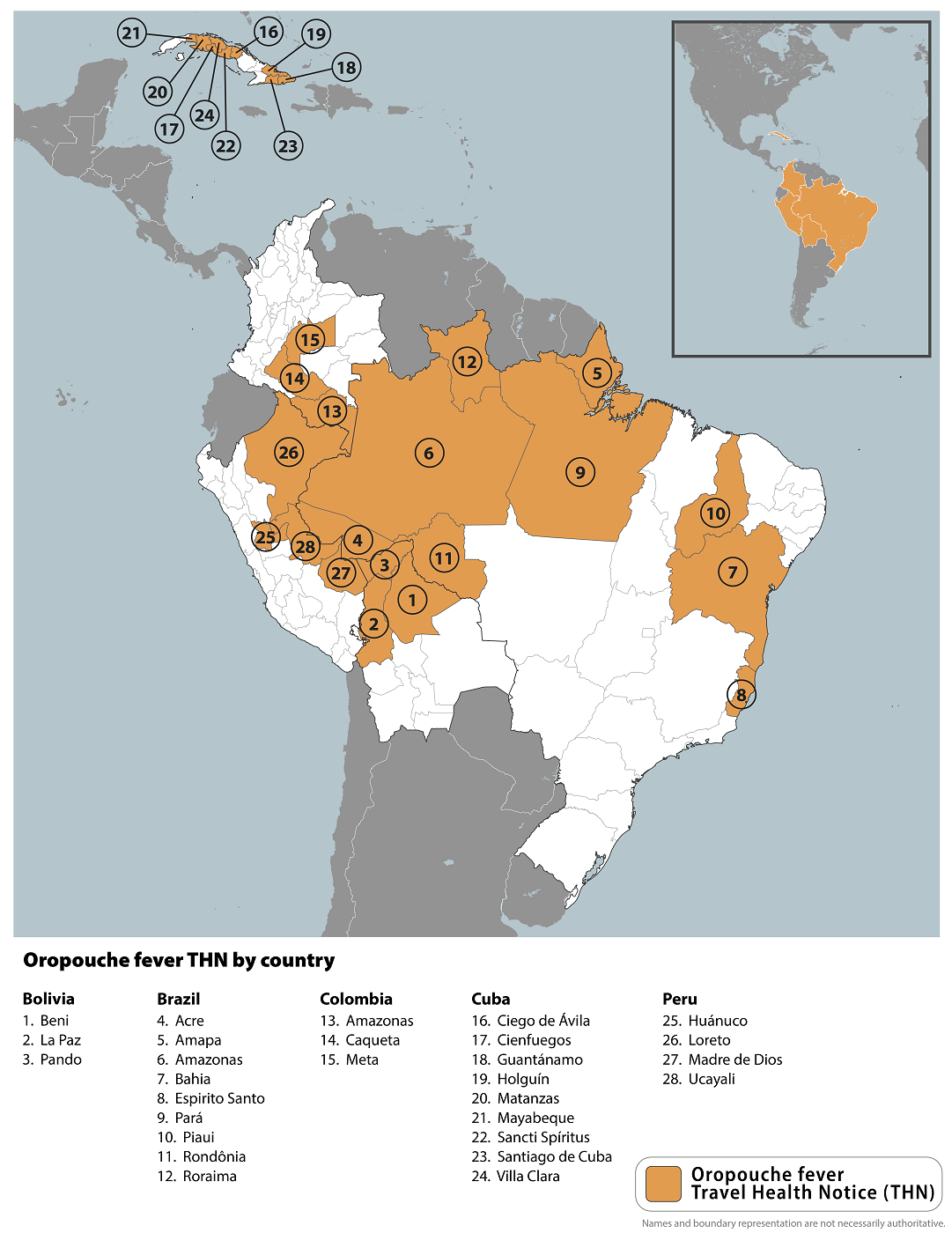
Oropouche fever is a disease caused by Oropouche virus. It is spread through the bites of infected midges (small flies) and mosquitoes.
Symptoms of Oropouche fever are similar to dengue and include headache, fever, muscle aches, stiff joints, nausea, vomiting, chills, or sensitivity to light. Severe cases may result in neuroinvasive disease such as meningitis .
Symptoms typically start 4–8 days after being bitten and last 3–6 days. Most people recover without long-term effects. Treatment is supportive; no specific medications or vaccines are available.
- There are outbreaks of Oropouche fever in parts of Brazil, Bolivia, Colombia, Peru, and Cuba (see map).
- Oropouche fever is spread by the bite of infected midges (small flies) and mosquitoes.
- Illness can occur in people of any age and is often mistaken for dengue.
- Travelers to affected areas should take steps to avoid bug bites .
- Travelers should seek medical care if they develop high fever, headache, muscle aches, stiff joints, nausea, vomiting, chills, or sensitivity to light during or after travel.
Traveler Information
- Health Information for Travelers to Bolivia
- Health Information for Travelers to Brazil
- Health Information for Travelers to Colombia
- Health Information for Travelers to Cuba
- Health Information for Travelers to Peru
- Epidemiological Update – Oropouche in the Region of the Americas
- Information Note from the Cuban Ministry of Public Health
File Formats Help:
- Adobe PDF file
- Microsoft PowerPoint file
- Microsoft Word file
- Microsoft Excel file
- Audio/Video file
- Apple Quicktime file
- RealPlayer file
- Zip Archive file
Exit Notification / Disclaimer Policy
- The Centers for Disease Control and Prevention (CDC) cannot attest to the accuracy of a non-federal website.
- Linking to a non-federal website does not constitute an endorsement by CDC or any of its employees of the sponsors or the information and products presented on the website.
- You will be subject to the destination website's privacy policy when you follow the link.
- CDC is not responsible for Section 508 compliance (accessibility) on other federal or private website.
Choosing between an Airbnb and a Hotel This Summer? Here Are Some Things to Consider
School of Hospitality Administration’s Makarand Mody weighs in on how to what’s best for you

Not sure whether to book a hotel room or an Airbnb this summer? With costs for the two more or less the same, the choice should come down to what you need out of a booking, says SHA associate professor Makarand Mody. Photo via iStock/miniseries
Choosing between an Airbnb and a Hotel This Summer? Here Are Some Things to Consider
School of hospitality administration’s makarand mody weighs in on how to decide what’s best for you, alene bouranova.
It’s official: now that summer is here, travel season has arrived.
According to Statista , the average American takes two to three vacations a year. That adds up to some serious domestic spending: this year, the US travel industry is expected to generate a staggering $2 billion in revenue.
Unless you have friends or family to crash with, there’s a good chance you’re going to need to book a place to stay while you’re away. But what to book?
When Airbnb came onto the scene, the homeshare company was seen as an industry disruptor and a low-cost alternative to hotels. But with tales of horrible customer support and sky-high fees—as well as cities cracking down on short-term rentals—it doesn’t have the reputation it used to. Hotels, meanwhile, offer the amenities and services you need while traveling, but lack the charm and ambience of staying in a home. If Airbnb is on the losing end of public opinion, does that mean hotels are having their moment in the sun?
To get some answers on what’s going on in the travel world, BU Today spoke to Makarand Mody , associate professor of hospitality marketing at Boston University’s School of Hospitality Administration, whose research has included the economic impact of Airbnb and why people choose hotels versus homeshares .
Regardless, one thing is for sure: Post–COVID-19, “travel has made a crazy fierce comeback,” Mody says. “The demand in general is so strong for travel, and in hospitality more broadly.”
We spoke with Mody and asked him to share some insights into travel trends and advice on what to consider when deciding where to stay.
This interview has been condensed and edited for clarity.
with Makarand Mody
Bu today: if you search online, you find no shortage of airbnb horror stories from both customers and hosts, from double-bookings to the company refusing to issue refunds. what’s the deal.
Mody: With Airbnb, COVID-19 was that [definitive] moment for them. They were sailing along for 10 years, during a period of positive economic growth—the economy was good, disposable incomes were high, and people were traveling like crazy. Then COVID-19 hit, and they didn’t know what to do. There was a big outcry over [not issuing] refunds, and then issues about [lax] safety at rentals and high cleaning fees. There was definitely an attitude of “this is not a great platform and we’re never using it again” online. And with prices in general going up as they have, for people who were on the fence about staying at an Airbnb versus a hotel, it came down to a diminishing value proposition. The thought was, if I’m going to get services like staff to check me in and housekeeping at hand, then I might as well pay all that money for a hotel versus having to do it myself at an Airbnb. The other piece is cities cracking down on regulations for short-term rentals. I remember searching for Airbnbs in Manhattan in the past, and so many would pop up. Now it’s just a handful for the most part. The density has definitely diminished over the last couple of years. The interesting thing is, though, that Airbnb’s numbers don’t necessarily tell these stories. The company has been reporting really good quarters all along. Part of that is just the sheer volume of people partaking in hospitality post-lockdowns, which obviously benefits Airbnb.
BU Today: Does that mean the anti-Airbnb hype is at least partially overblown?
Mody: If you think about the psychology of online interactions, the people who tend to complain the most are also the people who tend to post the most online. In general, reviews tend to come from people who either had really good experiences, or really crappy ones. Most people’s experiences tend to fall in the middle. I, personally, have never had a crappy Airbnb experience that made me go and shout from the rooftops that the company is the devil—and I think that’s the case for most people. If you look at the number of people who are satisfied or highly satisfied with their Airbnb experience, that proportion is significantly higher than those who are dissatisfied. And, again, while we may see more people complaining, that’s also because more people are traveling than ever before.
BU Today: All that said, are hotels coming back into the spotlight as a go-to option?
Mody: They definitely have. The financial reports speak for themselves. The big players—the Marriotts and the Hiltons of the world—have been doing really well. I think part of that has been the fact that hotels took a hit in occupancies and revenues before COVID-19, because people were moving away from them towards Airbnb. After the pandemic, things have changed a little bit. People appreciate the sense of safety and the services that hotels offer. Hotels have also been pretty good about reinventing the experience in some ways—I can book a room on an app now. And, with fees being tacked on to Airbnb [partially] as a result of jurisdictions taxing short-term rentals now, the price differential between a hotel and an Airbnb isn’t that much. At that point, why not go for the comfort of a hotel, where if something’s wrong, someone will fix it for you instantly? On the hotel side, brands have also gotten smarter at recognizing how people actually travel. Before COVID-19, the hotel room hadn’t changed for 50 years, right? Now, let’s say you’re staying in New York City, for example: How much time do you actually spend in the room? You’re there to explore the city. These new hotel brands in particular have realized that they don’t need to have such large rooms; they can make those smaller and cut costs, but also make the public space experience much cooler. They can put in cool rooftop bars and create activities and programming in the lobbies to make those thriving spaces. You can’t get a rooftop bar at an Airbnb—that becomes the draw to stay at a hotel.
BU Today: So, what should people take into consideration when they’re thinking about what to book?
Mody: Some of the research I’ve done was to find out what the factors are when people choose hotels or Airbnbs. Whatever their choice, we found that what people consistently look for is quality and service. People look for good reviews, how many stars a host or hotel has—if something is below four stars, that won’t even be considered by most people—how many people have stayed at a place before, and for indicators that a booking is at a welcoming space. I think, at this point, the dynamics of “Am I largely an Airbnb customer or a hotel customer? Or am I still that person who determines every time I travel which one I want to stay at?” have pretty much settled out for most people. So, it’s hard to say what people should be looking out for, but I think the biggest takeaway should be what your biggest need is at that point in time, and whether a homeshare or a hotel would best fulfill that need. For example, I have a three-year-old and another one on the way. When I travel, it’s my once-a-year trip. There’s never a thought in my mind about home-sharing—I don’t want to cook my own food. I want turndown service and someone to run out to get milk for my child. As far as service is concerned, it’s hotels all the way for me. But a few years ago, I would totally look into Airbnb and cool [off-the-beaten-path] experiences. And if I was traveling with another family or two, and taking all our kids on vacation, I might actually consider renting a large home with a private pool so we can spread out but still be together. In general, it’s super circumstantial.
Explore Related Topics:
- School of Hospitality Administration
- Share this story
- 0 Comments Add
Writer/Editor Twitter Profile

Alene Bouranova is a Pacific Northwest native and a BU alum (COM’16). After earning a BS in journalism, she spent four years at Boston magazine writing, copyediting, and managing production for all publications. These days, she covers campus happenings, current events, and more for BU Today . Fun fact: she’s still using her Terrier card from 2013. When she’s not writing about campus, she’s trying to lose her Terrier card so BU will give her a new one. She lives in Cambridge with her plants. Profile
Alene Bouranova can be reached at [email protected]
Comments & Discussion
Boston University moderates comments to facilitate an informed, substantive, civil conversation. Abusive, profane, self-promotional, misleading, incoherent or off-topic comments will be rejected. Moderators are staffed during regular business hours (EST) and can only accept comments written in English. Statistics or facts must include a citation or a link to the citation.
Post a comment. Cancel reply
Your email address will not be published. Required fields are marked *
Latest from BU Today
As boston braces for first heat wave of season, bu opens cooling stations for students, lessons from an interim president: kenneth freeman reflects on a historic year, to do today: summer solstice celebration, to do today: attend the annual roxbury international film festival, supreme court strikes down ban on gun bump stocks, to do today: explore the historic longfellow house, meet bu’s new lgbtqia+ student resource center director, supreme court upholds access to abortion pill mifepristone, mlb is including negro league stats in its record books. is it too little, too late, pov: biden’s asylum ban is legally, morally, and politically wrong, here’s how you can celebrate juneteenth on and off campus this year, bridgerton season 3 wraps: exactly how historically accurate is netflix’s hit regency-era romantic drama, president-elect melissa gilliam names new provost, fills key senior staff posts, googlies, yorkers, jaffers, and the cricket match that shocked the world, to do today: “i’m right” drag trivia night at roxy’s arcade, should samuel alito and clarence thomas recuse themselves from the supreme court’s insurrection cases, coming soon: waving your phone to ride on the mbta, as drownings surge, fitrec offers swim lessons that could save your life, dive into lgbtq+ pride month with these 12 books, is israel committing genocide in gaza new report from bu school of law’s international human rights clinic lays out case.

IMAGES
VIDEO
COMMENTS
The Overall Best Time to Visit Brazil in 2024. Irenav/Shutterstock. December-March is the best time to visit Brazil. Summer's warm temps, little rain, and sunny days. Best all around for weather, outdoor activities, and events. Summertime in the southern hemisphere — December through March — is the best time to visit Brazil overall. This ...
December to March is the peak season for beach days. For travelers crossing the equator to get to Brazil, remember that the seasons in Brazil are flipped. So if you want summertime weather, you should arrive between December and March. With over 6400km (4000 miles) of coastline, you have plenty of beaches to choose from, but those surrounding ...
The Cheapest Times to Visit Brazil. High season in Brazil is considered June through August, when North Americans and Europeans take summer vacation; March is the cheapest month to fly, according to Kayak. LATAM, American and Azul have the most flights from the US to Brazil, and though Kayak considers São Paulo its most popular destination ...
Visiting Brazil in June - July. June and July are lovely times to visit the Green Coast between Rio and São Paulo; evenings are cooler, but the air is fresh and the sea still warm. Bahia's rainy season tends to begin in June, but it is usually easy to plan your day around the one or two showers that arrive in the afternoon.
The best time to visit Brazil is in summer between December to February. Here is a month-by-month guide to the climate in Brazil and seasonal highlights. ... region and season. When traveling to Brazil, here are a few items you must carry: Lightweight rain and wind jacket (especially from Dec to Mar), comfortable shoes, swimsuit, sandals ...
Here are some of the benefits of visiting Brazil during the dry season: Mild weather: Brazil has a tropical climate, but the dry season offers mild and pleasant temperatures across most of the country. This makes it ideal for spending time outdoors and enjoying the country's many natural attractions. Clear skies: The dry season is also the ...
In most of Brazil, the summer season is a hot one, and for those who enjoy sunshine and heat, this is the perfect time to visit. It is also during this time that the world-famous Carnival occurs. In addition to Carnival, the sunny weather and high temperatures during the summer season make visiting Brazil's northern beaches a must.
Overall Brazil Travel Experience by Season Fall (March through May) Humidity and temperatures combine to make this season feel warm. Highs range from 86.3°F (30.2°C) and 79.7°F (26.5°C) with colder temperatures in the later months. Rain is rare with 2 to 3 days of significant precipitation per month. Fall is the second busiest for tourism ...
On the other hand, the winter season is the coolest in Brazil, starting from June to August, with June being the coldest. Temperatures can reach up to 66°F (19°C), so the weather is not necessarily freezing. A better way of describing winter in Brazil is that it's chilly rather than cold. Conclusion - Best Time to Visit Brazil
Overall, the best time to visit is during the summer between December and March. Everything Brazil is most loved for is in full swing—the beaches are in their full, sun-kissed glory; the sun sets to the melodic sounds of samba, and a cold caipirinha tastes even better when the sun's beaming down. Not to mention the opportunity to experience ...
April to June (Fall): Fall brings milder temperatures, making it a pleasant time to visit. It's less crowded than summer, and the Amazon region experiences less rainfall. It's a good season for exploring various parts of the country. June to September (Winter): Winter in Brazil, especially in the southern regions, brings cooler temperatures.
Visiting Brazil in March. March is still high season, in Brazil. Music, festivals, events and fun are still in the air, in key travel destinations. March is excellent for beach going and sea sports. It rains a lot more in the North and Northeast coast of Brazil (Bahia, Recife, Fortaleza and the dozens of beach resorts of this part of Brazil ...
The best time to visit Brazil is between December and March for most travelers. Although there are regional weather variations, this is the hot, sunny summer season in large parts of the country. The cooler winter months are June to September, with heat and humidity rising the further north you go. This time is popular with families on their ...
However, to make the most out of a trip, it's good to know the best and not-so-best times to visit this vast region. As a general rule, the best time to visit Brazil is between November and March during the country's summer months. This wet, humid season brings warmer weather with average temperatures between 80°F and 89°F in most parts ...
Best time of year to visit Brazil. The truth is, any time is the best time to visit Brazil.November to March can bring the hottest weather, plus flocks of tourists that come to enjoy astounding beaches and take part in carnivals like Festa da Iemanjá or Salvador da Bahia. April and May can be pleasant as well, especially in Pantanal, where you can spot unique wildlife even in the wettest months.
The low season in Brazil, which typically occurs between March and November, offers a different experience for travelers seeking to explore the country without the large crowds. This is a great time to visit if you prefer a more relaxed and peaceful atmosphere, as tourist numbers are significantly lower compared to the high season.
In the wet season there are more activities available by boat and in the dry season there is more chance to hike. Best time to visit North East Brazil In the North East of the country May and June are usually the wettest months, but as it is close to the equator the temperature does not vary dramatically year round, remaining hot.
It may be interesting to travel at this time of the year if you are looking for a more relaxing holiday. Bank holidays in Brazil. It is important to note the famous bank holidays in Brazil where prices can become astronomical (4 to 5 times normal prices), especially for New Year's Eve, carnival and Easter which are the most popular.
Yes, summer is the best time to visit Brazil for sun-soaked beaches, vibrant festivals like Rio Carnival, and exploring the lush Amazon rainforest. Highlights: Explore the Amazon rainforest that teems with diverse wildlife and vibrant flora during summer. Immerse in Brazil's lively summer festivals, especially the iconic Rio Carnival, featuring ...
Brazil is an attractive and unforgettable country to visit in any season. The country has the Equator in the North, the Tropic of Capricorn in the South, the Atlantic washing the coastline in the East. That's a paradise world you want to return again and again. Amazon Plain occupies a wide aria of the country. Archaeologists say Amazonia once was a bottom of giant sea.
Brazil's largest cities are all located near the coast. Apart from Rio de Janeiro, São Paulo, Belo Horizonte, Porto Allegre, Recife and Fortaleza are the largest conurbations. Rio de Janeiro was the capital of Brazil for over 200 years, but lost its status to the new plan capital Brasilia in the central highlands. Brazilian climate
In Brazil, the largest country in South America, the climate is equatorial, hot all year round with constant rain, in the north, in the Amazon rainforest, while it is tropical with a dry season in the centre-south. In the extreme south, on the other hand, the climate is subtropical, with mild winters (but colder than in the rest of the country) and hot summers.
The first few episodes of Love Is Blind: Brazil - A Fresh Start will come out on June 19, meaning that it is almost time to catch up on the new love stories that will take place this season ...
The early and intense wildfire season is threatening to exceed the worst blazes on record that in 2020 decimated a third of the wetlands and killed 17 million vertebrates.
A guide to Paraty, on the Costa Verde, with tips on where to stay, shop and island hop from the artist Vik Muniz and four other insiders. By Nora Walsh T's monthly travel series, Flocking To ...
According to the National Weather Service's Storm Prediction Center, April and May of 2024 had the second most tornadoes on record, only behind the historic year of 2011 when an EF-5 tornado ...
Virginia men's basketball delivered some bad news on Friday, as Tony Bennett announced that sophomore guard Elijah Gertrude will miss the 2024-2025 season with a knee injury. According to the UVA ...
Oropouche fever is a disease caused by Oropouche virus. It is spread through the bites of infected midges (small flies) and mosquitoes. Symptoms of Oropouche fever are similar to dengue and include headache, fever, muscle aches, stiff joints, nausea, vomiting, chills, or sensitivity to light. Severe cases may result in neuroinvasive disease such as meningitis.
The best time to visit Brazil is between December and March for most travellers. Although there are regional weather variations, this is the hot, sunny summer season in large parts of the country. The cooler winter months are June to September, with heat and humidity rising the further north you go. This time is popular with families on their ...
It's official: now that summer is here, travel season has arrived. According to Statista, the average American takes two to three vacations a year.That adds up to some serious domestic spending: this year, the US travel industry is expected to generate a staggering $2 billion in revenue.. Unless you have friends or family to crash with, there's a good chance you're going to need to book ...